Mammals Of The United States on:
[Wikipedia]
[Google]
[Amazon]
About 490 species of mammals are recorded in the United States.
 Didelphimorphia is the order of common opossums of the Western Hemisphere. Opossums probably diverged from the basic South American marsupials in the late Cretaceous or early Paleocene. They are small to medium-sized marsupials, about the size of a large house cat, with a long snout and
Didelphimorphia is the order of common opossums of the Western Hemisphere. Opossums probably diverged from the basic South American marsupials in the late Cretaceous or early Paleocene. They are small to medium-sized marsupials, about the size of a large house cat, with a long snout and
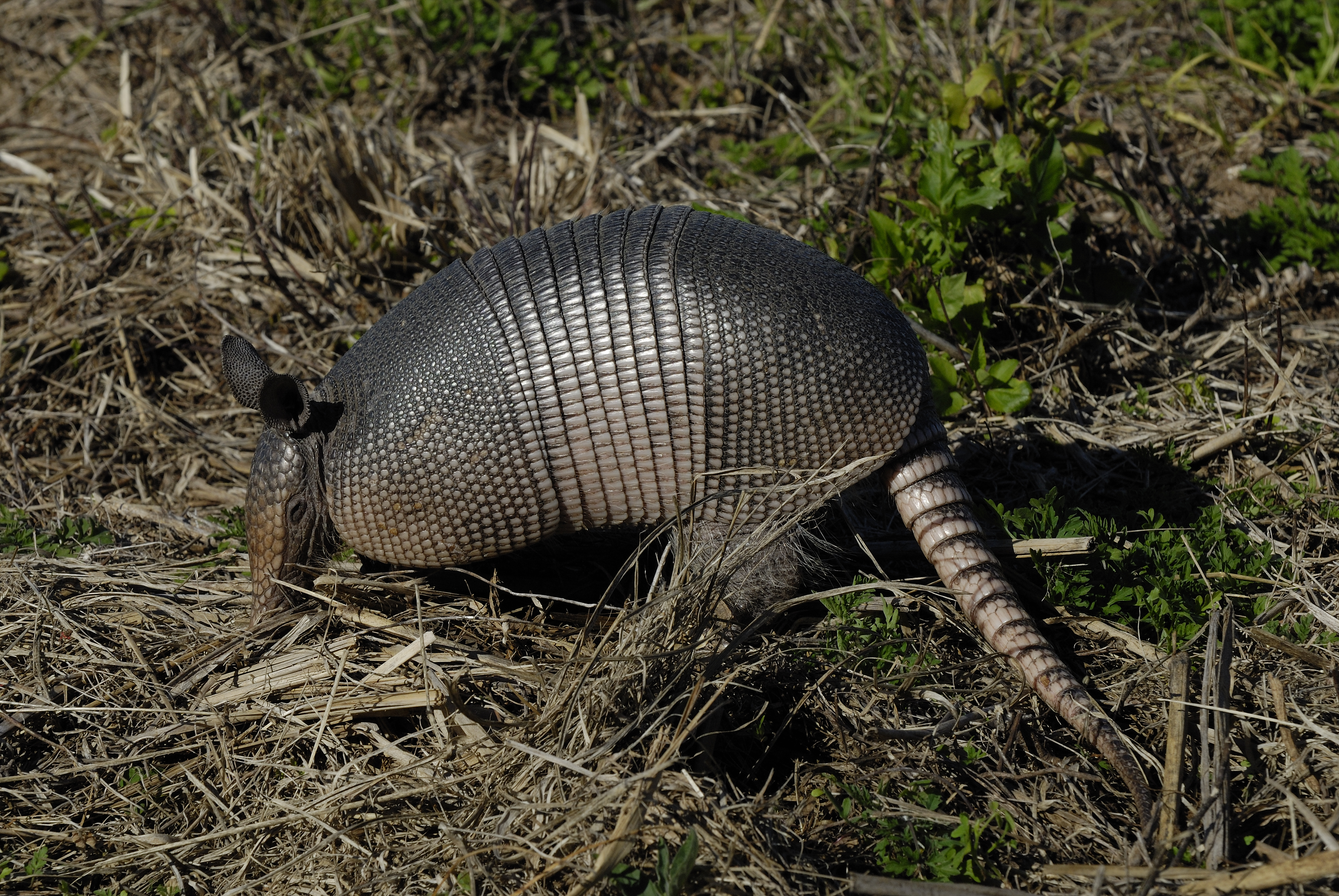 The armadillos are small mammals with a bony armored shell. They are native to the Americas. There are around 20 extant species. Only the nine-banded armadillo is found in the United States.
*Family: Dasypodidae (armadillos)
**Subfamily:
The armadillos are small mammals with a bony armored shell. They are native to the Americas. There are around 20 extant species. Only the nine-banded armadillo is found in the United States.
*Family: Dasypodidae (armadillos)
**Subfamily:



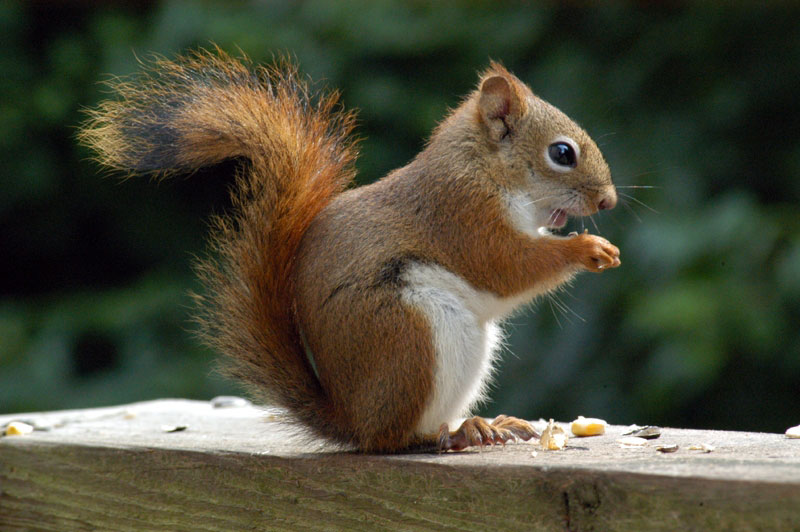
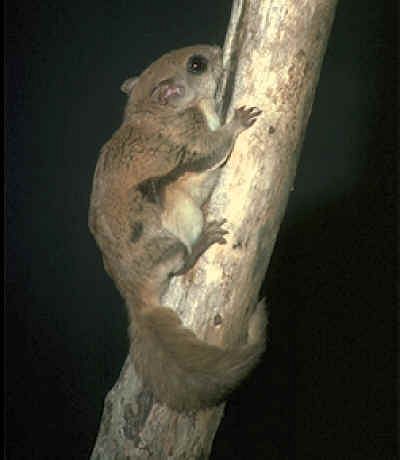
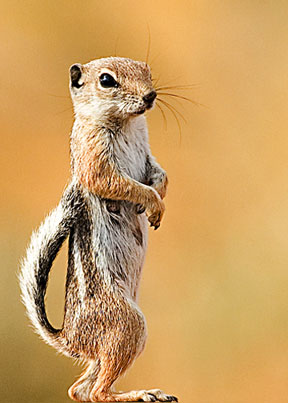



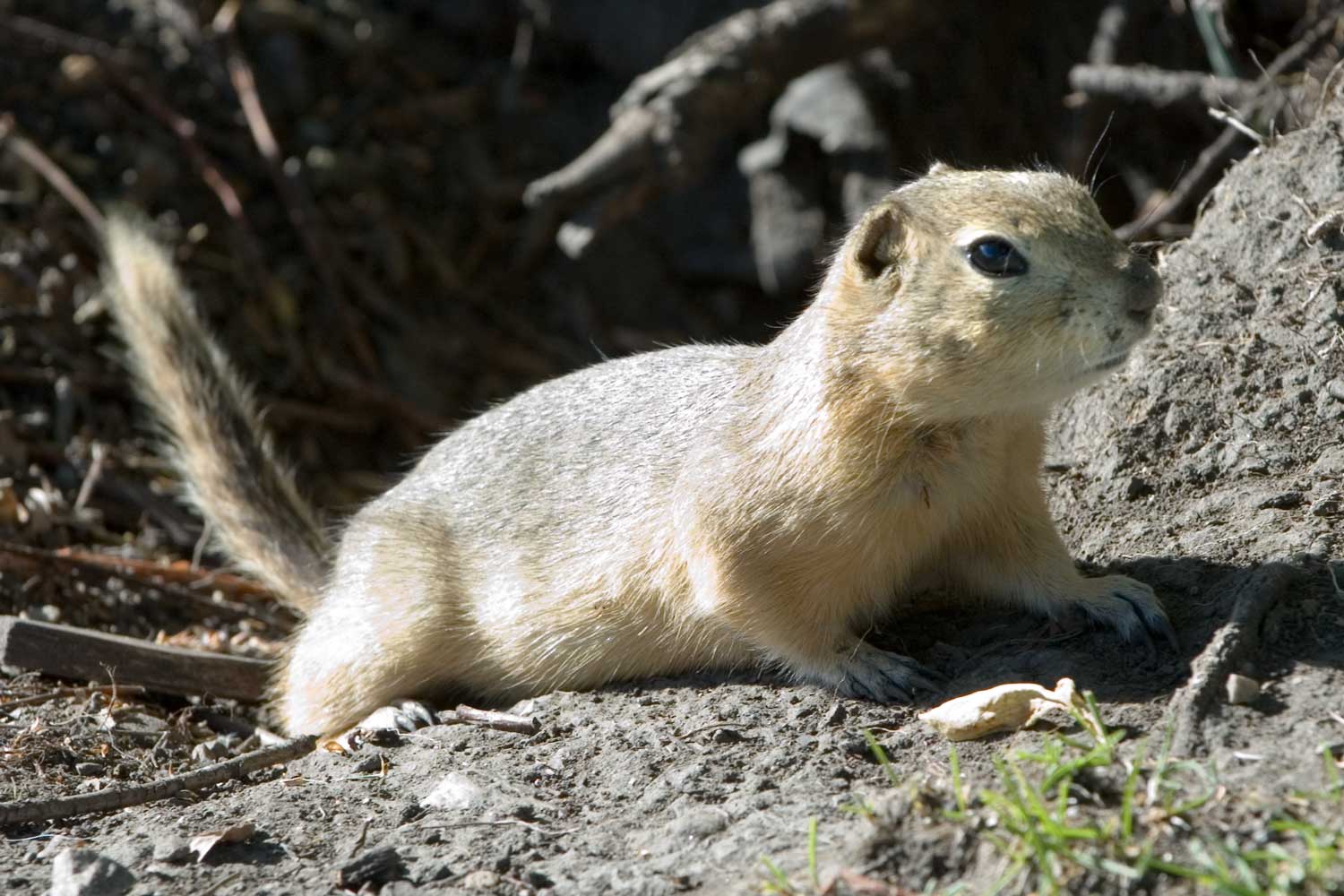
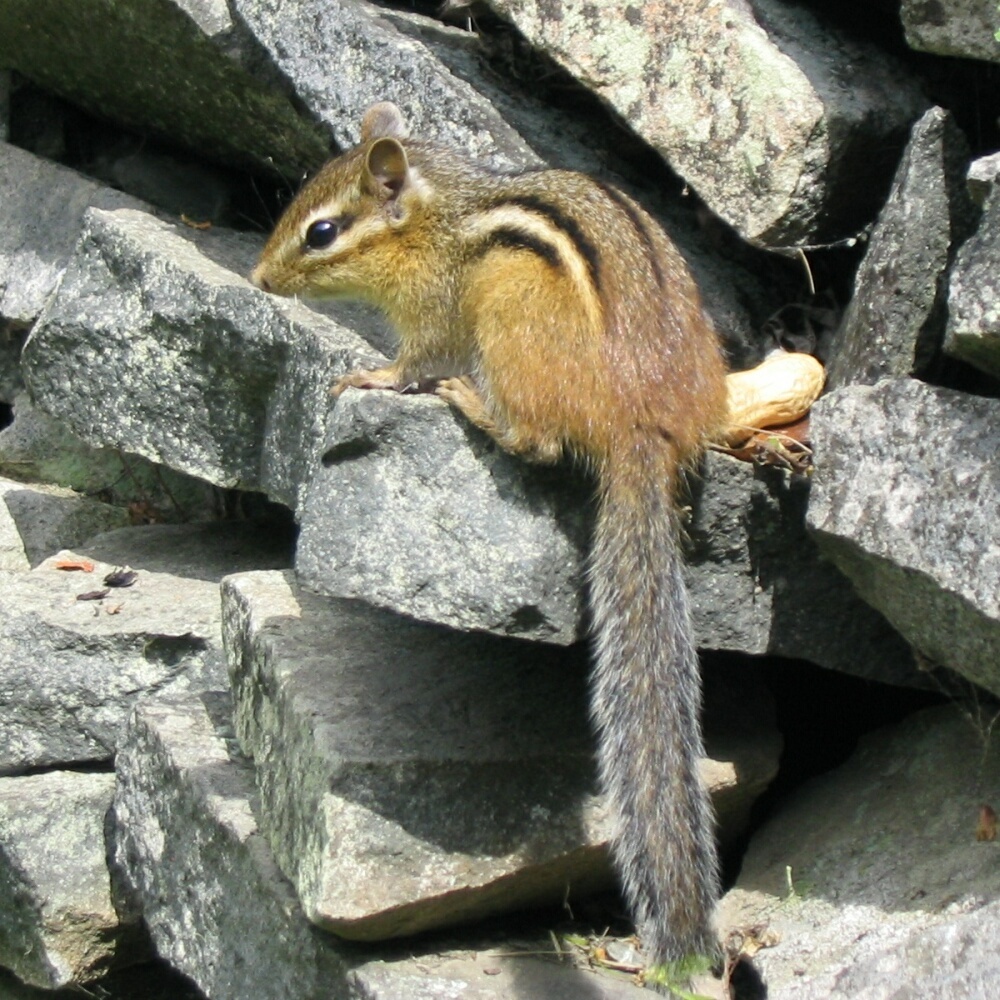

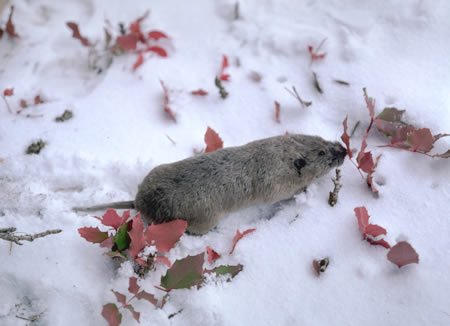
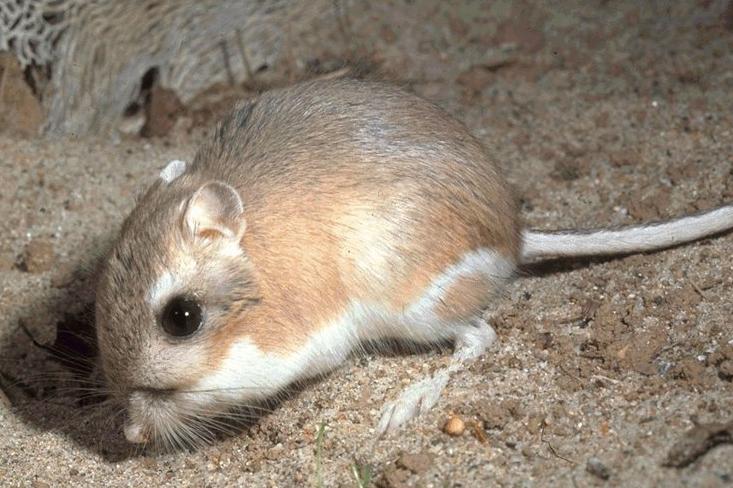

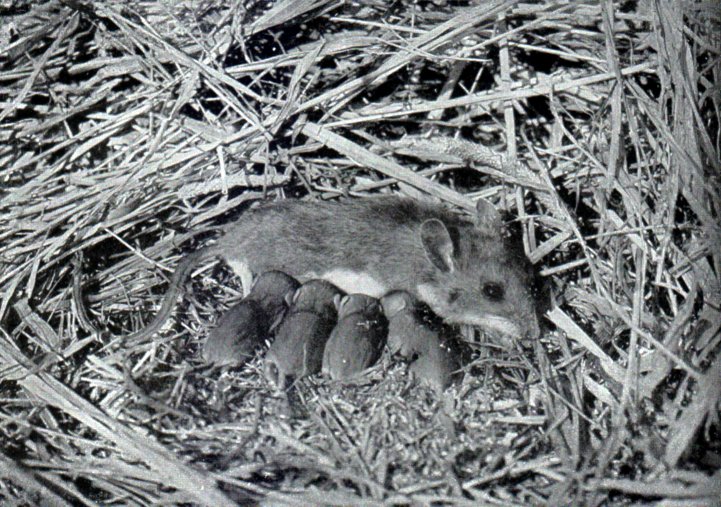
 Rodents make up the largest order of mammals, with over 40% of mammalian species. They have two incisors in the upper and lower jaw which grow continually and must be kept short by gnawing. Most rodents are small though the
Rodents make up the largest order of mammals, with over 40% of mammalian species. They have two incisors in the upper and lower jaw which grow continually and must be kept short by gnawing. Most rodents are small though the
(Carolina northern flying squirrel ''G. s. coloratus'', Virginia northern flying squirrel ''G. s. fuscus'': ) *****
(
(
(
('' D. venustus'': ) ****
(
( Preble's meadow jumping mouse, ''Z. h. preblei'': ) ****
(including ''M. mogollonensis'': , ssp. ''hualpaiensis'': )) and: ***** Mogollon vole, ''M. mogollonensis'' **** Singing vole, ''M. miurus'' ( Alaska only) **** Montane vole, ''M. montanus'' **** Prairie vole, ''M. ochrogaster'' ****
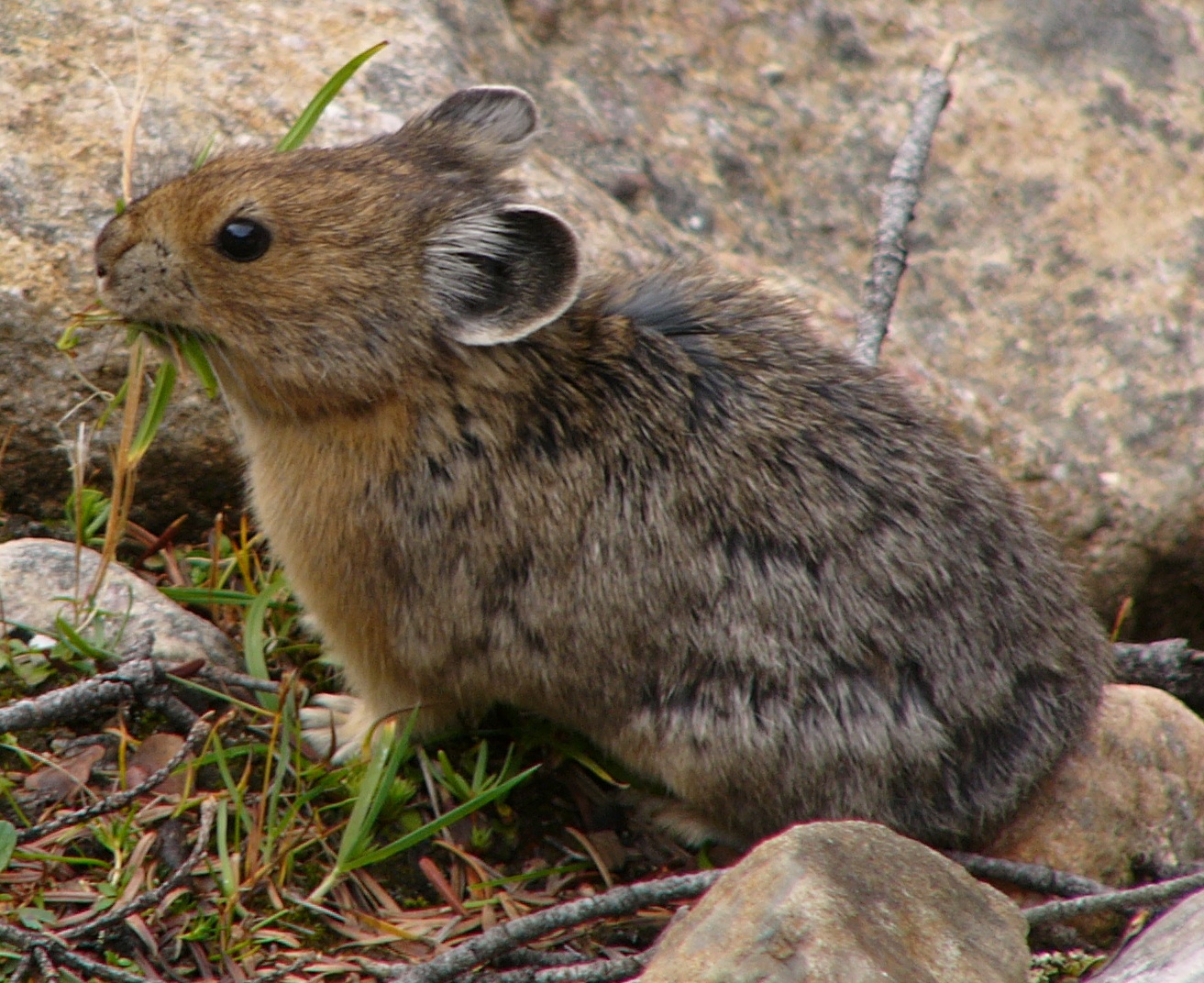

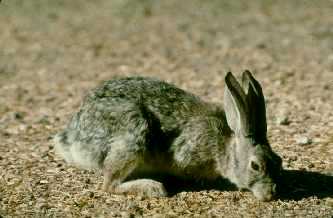
 The lagomorphs comprise two families, Leporidae (
The lagomorphs comprise two families, Leporidae (

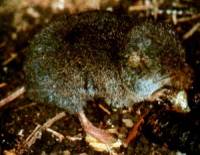
 Eulipotyphlans are insectivorous mammals. Shrews and solenodons closely resemble mice, hedgehogs carry spines, while moles are stout-bodied burrowers.
*Family: Soricidae (shrews)
**Subfamily: Soricinae
***Tribe: Blarinini
**** Northern short-tailed shrew, ''B. brevicauda''
**** Southern short-tailed shrew, ''B. carolinensis'' and:
***** Sherman's short-tailed shrew, ''B. shermani''
***** Everglades short-tailed shrew, ''B. peninsulae''
**** Elliot's short-tailed shrew, ''B. hylophaga''
**** North American least shrew, ''C. parva'' and:
*****Berlandier's least shrew, ''C. berlandieri''
***Tribe: Notiosoricini
**** Cockrum's gray shrew, ''N. cockrumi''
**** Crawford's gray shrew, ''N. crawfordi'' and:
***** Ticul's gray shrew, ''N. tataticuli''
***Tribe: Soricini
**** Glacier Bay water shrew, ''S. alaskanus'' ( Alaska only)
**** Arctic shrew, ''S. arcticus''
**** Arizona shrew, ''S. arizonae''
**** Baird's shrew, ''S. bairdi''
**** Marsh shrew, ''S. bendirii''
**** Cinereus shrew, ''S. cinereus'' and:
***** Maryland shrew, ''S. cinereus fontinalis''
**** Long-tailed shrew, ''S. dispar'' and:
***** Gaspé shrew, ''S. gaspensis''
**** Smoky shrew, ''S. fumeus''
**** Prairie shrew, ''S. haydeni''
**** American pygmy shrew, ''S. hoyi'' and:
***** Western pygmy shrew, ''S. eximius''
**** Pribilof Island shrew, ''S. pribilofensis'' ( Alaska only)
**** Saint Lawrence Island shrew, ''Sorex jacksoni'' ( Alaska only)
**** Southeastern shrew, ''S. longirostris''
**** Mount Lyell shrew, ''S. lyelli''
**** Merriam's shrew, ''S. merriami''
**** Montane shrew, Southern montane shrew, ''S. monticolus'' and:
*****Northern montane shrew, ''S. obscurus''
**** Dwarf shrew, ''S. nanus''
**** New Mexico shrew, ''S. neomexicanus''
**** Ornate shrew, ''S. ornatus'' (ssp. ''relictus'': )
**** Pacific shrew, ''S. pacificus''
**** American water shrew, ''S. palustris'' and:
*****Eastern water shrew, ''S. albibarbis''
*****Western water shrew, ''S. navigator''
**** Preble's shrew, ''S. preblei''
**** Olympic shrew, ''S. rohweri'' (formerly in ''Sorex cinereus'')
**** Fog shrew, ''S. sonomae''
**** Inyo shrew, ''S. tenellus''
**** Trowbridge's shrew, ''S. trowbridgii''
**** Tundra shrew, ''S. tundrensis'' ( Alaska only)
**** Barren ground shrew, ''S. ugyunak'' ( Alaska only)
**** Vagrant shrew, ''S. vagrans''
**** Alaska tiny shrew, ''S. yukonicus'' ( Alaska only)
*Family: Talpidae (moles)
**Subfamily: Scalopinae
***Tribe: Condylurini
**** Star-nosed mole, ''C. cristata''
***Tribe: Scalopini
**** Hairy-tailed mole, ''P. breweri''
**** Eastern mole, ''S. aquaticus''
**** Northern broad-footed mole, ''S. latimanus''
**** Southern broad-footed mole (''S. occultus'')
**** Coast mole, ''S. orarius''
**** Townsend's mole, ''S. townsendii''
**Subfamily: Talpinae
***Tribe: Neurotrichini
**** Shrew-mole (Neurotrichus), Shrew-mole, ''N. gibbsii''
Eulipotyphlans are insectivorous mammals. Shrews and solenodons closely resemble mice, hedgehogs carry spines, while moles are stout-bodied burrowers.
*Family: Soricidae (shrews)
**Subfamily: Soricinae
***Tribe: Blarinini
**** Northern short-tailed shrew, ''B. brevicauda''
**** Southern short-tailed shrew, ''B. carolinensis'' and:
***** Sherman's short-tailed shrew, ''B. shermani''
***** Everglades short-tailed shrew, ''B. peninsulae''
**** Elliot's short-tailed shrew, ''B. hylophaga''
**** North American least shrew, ''C. parva'' and:
*****Berlandier's least shrew, ''C. berlandieri''
***Tribe: Notiosoricini
**** Cockrum's gray shrew, ''N. cockrumi''
**** Crawford's gray shrew, ''N. crawfordi'' and:
***** Ticul's gray shrew, ''N. tataticuli''
***Tribe: Soricini
**** Glacier Bay water shrew, ''S. alaskanus'' ( Alaska only)
**** Arctic shrew, ''S. arcticus''
**** Arizona shrew, ''S. arizonae''
**** Baird's shrew, ''S. bairdi''
**** Marsh shrew, ''S. bendirii''
**** Cinereus shrew, ''S. cinereus'' and:
***** Maryland shrew, ''S. cinereus fontinalis''
**** Long-tailed shrew, ''S. dispar'' and:
***** Gaspé shrew, ''S. gaspensis''
**** Smoky shrew, ''S. fumeus''
**** Prairie shrew, ''S. haydeni''
**** American pygmy shrew, ''S. hoyi'' and:
***** Western pygmy shrew, ''S. eximius''
**** Pribilof Island shrew, ''S. pribilofensis'' ( Alaska only)
**** Saint Lawrence Island shrew, ''Sorex jacksoni'' ( Alaska only)
**** Southeastern shrew, ''S. longirostris''
**** Mount Lyell shrew, ''S. lyelli''
**** Merriam's shrew, ''S. merriami''
**** Montane shrew, Southern montane shrew, ''S. monticolus'' and:
*****Northern montane shrew, ''S. obscurus''
**** Dwarf shrew, ''S. nanus''
**** New Mexico shrew, ''S. neomexicanus''
**** Ornate shrew, ''S. ornatus'' (ssp. ''relictus'': )
**** Pacific shrew, ''S. pacificus''
**** American water shrew, ''S. palustris'' and:
*****Eastern water shrew, ''S. albibarbis''
*****Western water shrew, ''S. navigator''
**** Preble's shrew, ''S. preblei''
**** Olympic shrew, ''S. rohweri'' (formerly in ''Sorex cinereus'')
**** Fog shrew, ''S. sonomae''
**** Inyo shrew, ''S. tenellus''
**** Trowbridge's shrew, ''S. trowbridgii''
**** Tundra shrew, ''S. tundrensis'' ( Alaska only)
**** Barren ground shrew, ''S. ugyunak'' ( Alaska only)
**** Vagrant shrew, ''S. vagrans''
**** Alaska tiny shrew, ''S. yukonicus'' ( Alaska only)
*Family: Talpidae (moles)
**Subfamily: Scalopinae
***Tribe: Condylurini
**** Star-nosed mole, ''C. cristata''
***Tribe: Scalopini
**** Hairy-tailed mole, ''P. breweri''
**** Eastern mole, ''S. aquaticus''
**** Northern broad-footed mole, ''S. latimanus''
**** Southern broad-footed mole (''S. occultus'')
**** Coast mole, ''S. orarius''
**** Townsend's mole, ''S. townsendii''
**Subfamily: Talpinae
***Tribe: Neurotrichini
**** Shrew-mole (Neurotrichus), Shrew-mole, ''N. gibbsii''



 The bats' most distinguishing feature is that their forelimbs are developed as wings, making them the only mammals capable of flight. Bat species account for about 20% of all mammals.
*Family: Vespertilionidae
**Subfamily: Myotinae
*** Silver-haired bat, ''L. noctivagans''
*** Southwestern myotis, ''M. auriculus''
*** Southeastern myotis, ''M. austroriparius''
*** California myotis, ''M. californicus''
*** Western small-footed myotis, ''M. ciliolabrum''
*** Long-eared myotis, ''M. evotis''
*** Gray bat, ''M. grisescens''
*** Keen's myotis, ''M. keenii''
*** Eastern small-footed myotis, ''M. leibii''
*** Little brown bat, ''M. lucifugus''
*** Dark-nosed small-footed myotis, ''M. melanorhinus''
*** Arizona myotis, ''M. occultus''
*** Northern long-eared myotis, ''M. septentrionalis''
*** Indiana bat, ''M. sodalis''
*** Fringed myotis, ''M. thysanodes''
*** Cave myotis, ''M. velifer''
*** Long-legged myotis, ''M. volans''
*** Yuma myotis, ''M. yumanensis''
**Subfamily: Vespertilioninae
*** Pallid bat, ''A. pallidus''
*** Big brown bat, ''E. fuscus''
*** Spotted bat, ''E. maculatum''
*** Allen's big-eared bat, ''I. phyllotis''
*** Eastern red bat, ''L. borealis''
*** Hoary bat, ''L. cinereus'' (Hawaiian hoary bat, ''L. c. semotus'': )
*** Southern yellow bat, ''L. ega''
*** Desert red bat, ''L. frantzii'' - split from Desert red bat, southern red bat, ''Lasiurus blossevillii''
*** Northern yellow bat, ''L. intermedius''
*** Seminole bat, ''L. seminolus''
*** Western yellow bat, ''L. xanthinus''
*** Evening bat, ''N. humeralis''
*** Western pipistrelle, ''P. hesperus''
*** Eastern pipistrelle, ''P. subflavus''
*** Rafinesque's big-eared bat, ''P. rafinesquii''
*** Townsend's big-eared bat, ''P. townsendii''
The bats' most distinguishing feature is that their forelimbs are developed as wings, making them the only mammals capable of flight. Bat species account for about 20% of all mammals.
*Family: Vespertilionidae
**Subfamily: Myotinae
*** Silver-haired bat, ''L. noctivagans''
*** Southwestern myotis, ''M. auriculus''
*** Southeastern myotis, ''M. austroriparius''
*** California myotis, ''M. californicus''
*** Western small-footed myotis, ''M. ciliolabrum''
*** Long-eared myotis, ''M. evotis''
*** Gray bat, ''M. grisescens''
*** Keen's myotis, ''M. keenii''
*** Eastern small-footed myotis, ''M. leibii''
*** Little brown bat, ''M. lucifugus''
*** Dark-nosed small-footed myotis, ''M. melanorhinus''
*** Arizona myotis, ''M. occultus''
*** Northern long-eared myotis, ''M. septentrionalis''
*** Indiana bat, ''M. sodalis''
*** Fringed myotis, ''M. thysanodes''
*** Cave myotis, ''M. velifer''
*** Long-legged myotis, ''M. volans''
*** Yuma myotis, ''M. yumanensis''
**Subfamily: Vespertilioninae
*** Pallid bat, ''A. pallidus''
*** Big brown bat, ''E. fuscus''
*** Spotted bat, ''E. maculatum''
*** Allen's big-eared bat, ''I. phyllotis''
*** Eastern red bat, ''L. borealis''
*** Hoary bat, ''L. cinereus'' (Hawaiian hoary bat, ''L. c. semotus'': )
*** Southern yellow bat, ''L. ega''
*** Desert red bat, ''L. frantzii'' - split from Desert red bat, southern red bat, ''Lasiurus blossevillii''
*** Northern yellow bat, ''L. intermedius''
*** Seminole bat, ''L. seminolus''
*** Western yellow bat, ''L. xanthinus''
*** Evening bat, ''N. humeralis''
*** Western pipistrelle, ''P. hesperus''
*** Eastern pipistrelle, ''P. subflavus''
*** Rafinesque's big-eared bat, ''P. rafinesquii''
*** Townsend's big-eared bat, ''P. townsendii''
(ssp. ''virginianus'' and ''ingens'': ) *Family: Molossidae ** Wagner's bonneted bat, ''E. glaucinus'' ** Eumops floridanus, Florida bonneted bat, ''E. floridanus'' ** Western mastiff bat, ''E. perotis'' ** Underwood's bonneted bat, ''E. underwoodi'' ** Velvety free-tailed bat, ''M. molossus'' ** Pocketed free-tailed bat, ''N. femorosaccus'' ** Big free-tailed bat, ''N. macrotis'' ** Mexican free-tailed bat, ''T. brasiliensis'' *Family: Mormoopidae ** Ghost-faced bat, ''M. megalophylla'' *Family: Phyllostomidae **Subfamily: Phyllostominae *** California leaf-nosed bat, ''M. californicus'' **Subfamily: Glossophaginae *** Mexican long-tongued bat, ''C. mexicana'' *** Lesser long-nosed bat, ''L. yerbabuenae'' (''Southern long-nosed bat, Leptonycteris curasoae yerbabuenae'': ) *** Greater long-nosed bat, ''L. nivalis'' **Subfamily: Stenodermatinae *** Velvety fruit-eating bat, ''E. hartii'' **Subfamily: Desmodontinae *** Hairy-legged vampire bat, ''D. ecaudata''




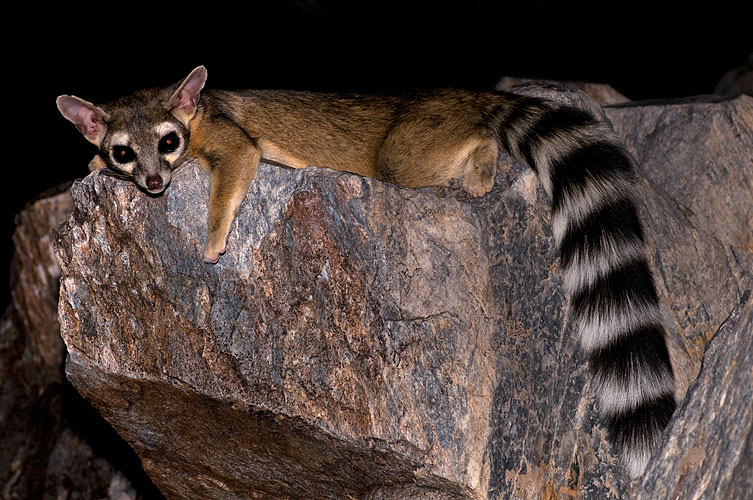

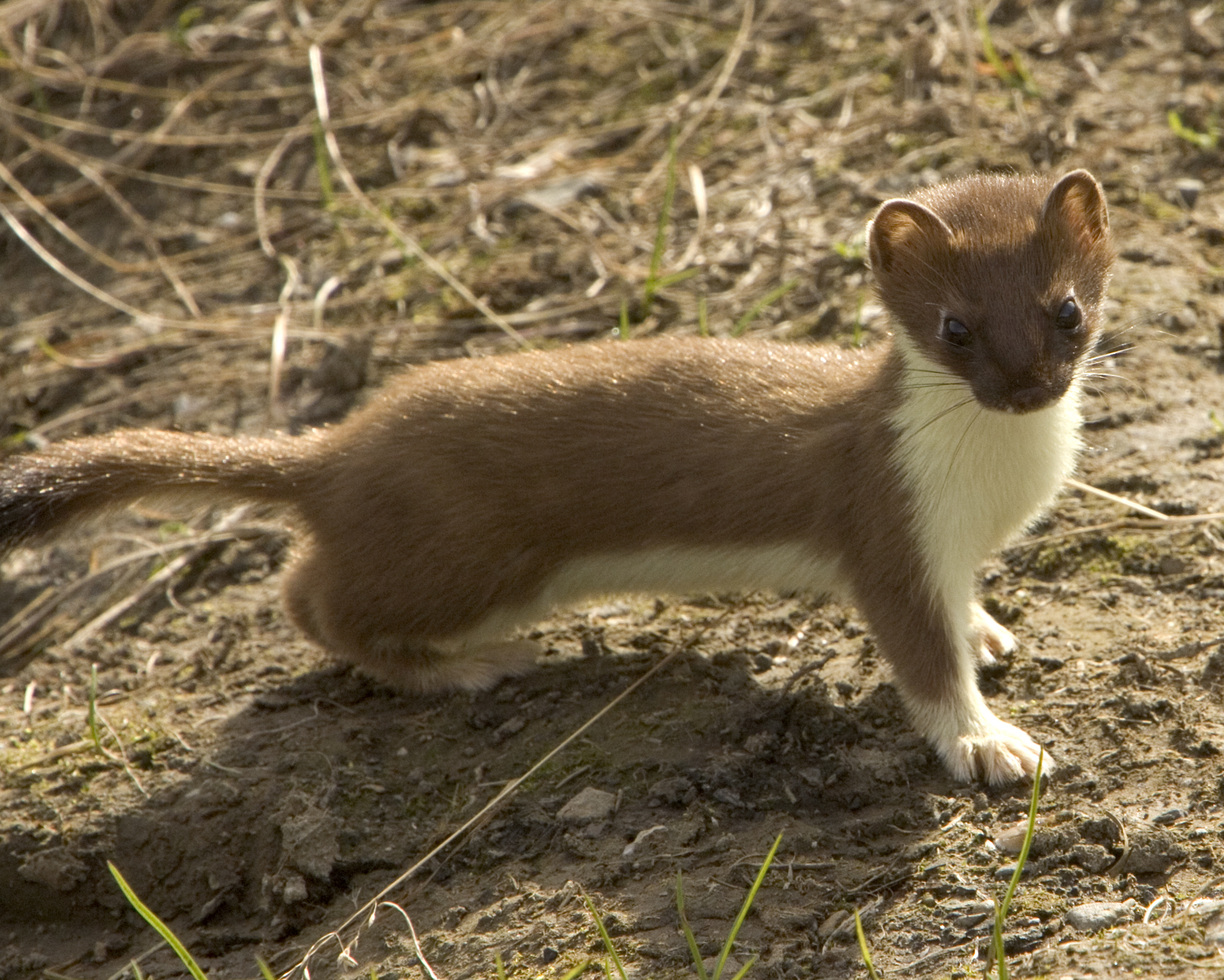


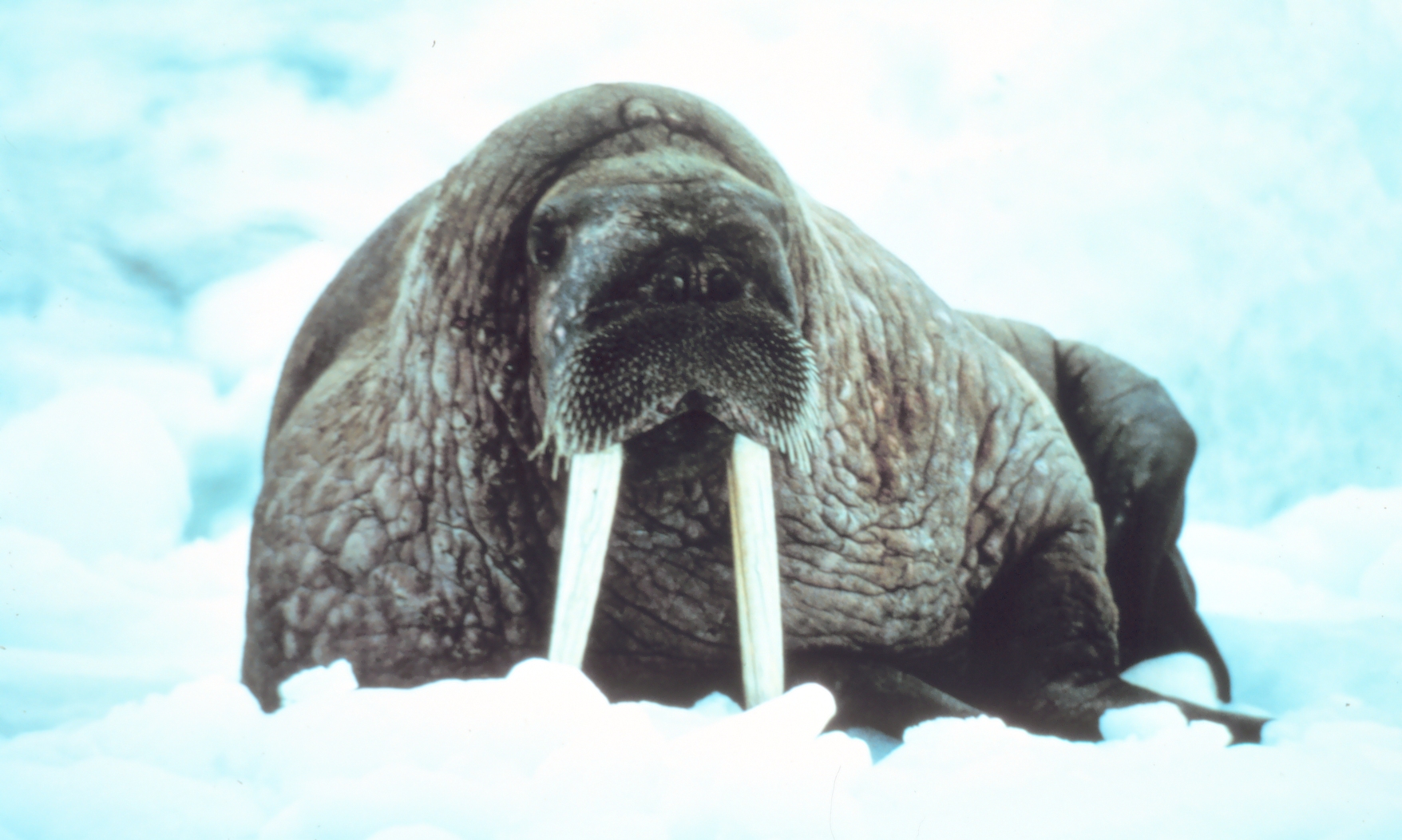

 There are over 260 species of carnivorans, the majority of which feed primarily on meat. They have a characteristic skull shape and dentition.
*Suborder: Feliformia
**Family: Felidae (cats)
*** Jaguarundi, ''H. yagouaroundi'' (Ex?)
*** Ocelot, ''L. pardalis''
*** Margay, ''L. wiedii'' (Ex?)
*** Canada lynx, ''L. canadensis''
*** Bobcat, ''L. rufus''
*** North American cougar, Cougar, ''P. concolor''
*** Jaguar, ''P. onca''
*Suborder: Caniformia
**Family: Canidae (dogs)
*** Coyote, ''C. latrans''
*** Gray wolf, ''C. lupus'' (and )
**** Arctic wolf, ''C. l. arctos'' (Alaska only) (and )
*** Eastern wolf, ''C. l. lycaon''
*** Red wolf, ''C. rufus'' (and )
*** Gray fox, ''U. cinereoargenteus''
*** Island fox, ''U. littoralis''
There are over 260 species of carnivorans, the majority of which feed primarily on meat. They have a characteristic skull shape and dentition.
*Suborder: Feliformia
**Family: Felidae (cats)
*** Jaguarundi, ''H. yagouaroundi'' (Ex?)
*** Ocelot, ''L. pardalis''
*** Margay, ''L. wiedii'' (Ex?)
*** Canada lynx, ''L. canadensis''
*** Bobcat, ''L. rufus''
*** North American cougar, Cougar, ''P. concolor''
*** Jaguar, ''P. onca''
*Suborder: Caniformia
**Family: Canidae (dogs)
*** Coyote, ''C. latrans''
*** Gray wolf, ''C. lupus'' (and )
**** Arctic wolf, ''C. l. arctos'' (Alaska only) (and )
*** Eastern wolf, ''C. l. lycaon''
*** Red wolf, ''C. rufus'' (and )
*** Gray fox, ''U. cinereoargenteus''
*** Island fox, ''U. littoralis''
(ssp. ''littoralis'', ''catalinae'', ''santarosae'' and ''santacruzae'': ) *** Arctic fox, ''V. lagopus'' ( Alaska only) *** Kit fox, ''V. macrotis'' (ssp. ''mutica'': ) *** Swift fox, ''V. velox'' (ssp. ''hebes'': ) *** Red fox, ''V. vulpes'' **Family: Ursidae (bears) *** American black bear, ''U. americanus''
(Louisiana black bear ''U. a. luteolus'': ) *** Brown bear, ''U. arctos''
(includes grizzly bear, ''Ursus arctos horribilis'': , ,
Alaskan brown bear ''Ursus arctos middendorffi'', also known as the Kodiak bear,
and ''Ursus arctos californicus''†, the California grizzly bear ) *** Polar bear, ''U. maritimus'' ( Alaska only) **Family: Procyonidae (raccoons) *** Ring-tailed cat, ''B. astutus'' *** White-nosed coati, ''N. narica'' *** Raccoon, ''P. lotor'' **Family: Mustelidae (mustelids) *** Sea otter, ''E. lutris'' (ssp. ''nereis'' and ''kenyoni'': , ssp. ''nereis'' also ) *** Wolverine, ''G. gulo'' *** North American river otter, ''L. canadensis'' *** American marten, ''M. americana'' *** Pacific marten, ''M. caurina'' *** Stoat, Beringian ermine or stoat, ''M. erminea'' ***Haida ermine, ''M. haidarum'' ( Alaska only) *** Black-footed ferret, ''M. nigripes'' (and ) *** Least weasel, ''M. nivalis'' ***American ermine, ''M. richardsonii'' *** Long-tailed weasel, ''N. frenata'' *** Sea mink, †''N. macrodon'' (E) *** American mink, ''N. vison'' *** Fisher (animal), Fisher, ''P. pennanti'' *** American badger, ''T. taxus'' **Family: Otariidae (eared seals, sealions) *** Guadalupe fur seal, ''A. townsendi'' *** Northern fur seal, ''C. ursinus'' *** Steller sea lion, ''E. jubatus''
(except west of 144° W, where ) (ssp. ''monteriensis'': ) *** California sea lion, ''Z. californianus'' **Family: Mephitidae *** American hog-nosed skunk, ''C. leuconotus'' *** Hooded skunk, ''M. macroura'' *** Striped skunk, ''M. mephitis'' *** Western spotted skunk, ''S. gracilis'' *** Eastern spotted skunk, ''S. putorius'' **Family: Odobenidae *** Walrus, ''O. rosmarus'' ( Alaska only) **Family: Phocidae (earless seals) *** Hooded seal, ''C. cristata'' *** Bearded seal, ''E. barbatus'' *** Gray seal, ''H. grypus'' *** Ribbon seal, ''H. fasciata'' ( Alaska almost only) *** Northern elephant seal, ''M. angustirostris'' *** Hawaiian monk seal, ''N. schauinslandi'' (Hawaiian Islands only) *** Caribbean monk seal, †''N. tropicalis'' (E) *** Harp seal, ''P. groenlandicus'' *** Spotted seal, ''P. largha'' ( Alaska only) *** Harbor seal, ''P. vitulina'' *** Ringed seal, ''P. hispida''




 The even-toed ungulates are ungulates whose weight is borne about equally by the third and fourth toes, rather than mostly or entirely by the third as in perissodactyls. There are about 220 artiodactyl species, including many that are of great economic importance to humans.
*Family: Tayassuidae (peccaries)
** Collared peccary, ''D. tajacu''
*Family: Cervidae (deer)
**Subfamily: Cervinae
*** Elk, ''C. canadensis''
**Subfamily: Capreolinae
*** Moose, ''A. alces''
*** Mule deer, ''O. hemionus''
*** White-tailed deer, ''O. virginianus'' (Odocoileus virginianus leucurus, Columbian white-tailed deer, ''O. v. leucurus'', and Odocoileus virginianus clavium, key deer, ''O. v. clavium'': )
*** Caribou, ''R. tarandus'' ( Alaska only)
The even-toed ungulates are ungulates whose weight is borne about equally by the third and fourth toes, rather than mostly or entirely by the third as in perissodactyls. There are about 220 artiodactyl species, including many that are of great economic importance to humans.
*Family: Tayassuidae (peccaries)
** Collared peccary, ''D. tajacu''
*Family: Cervidae (deer)
**Subfamily: Cervinae
*** Elk, ''C. canadensis''
**Subfamily: Capreolinae
*** Moose, ''A. alces''
*** Mule deer, ''O. hemionus''
*** White-tailed deer, ''O. virginianus'' (Odocoileus virginianus leucurus, Columbian white-tailed deer, ''O. v. leucurus'', and Odocoileus virginianus clavium, key deer, ''O. v. clavium'': )
*** Caribou, ''R. tarandus'' ( Alaska only)
(includes Rangifer tarandus caribou, migratory woodland caribou, ''R. t. caribou'': ,
see also: barren-ground caribou, ''R. t. groenlandicus'') *Family: Antilocapridae (pronghorn) ** Pronghorn, ''A. americana'' (Antilocapra americana sonoriensis, Sonoran pronghorn, ''A. a. sonoriensis'': ) *Family: Bovidae (cattle, antelope, sheep, goats) **Subfamily: Bovinae *** American bison, ''B. bison'' (Bison bison athabascae, wood bison, ''B. b. athabascae'': ) **Subfamily: Caprinae *** Mountain goat, ''O. americanus'' *** Muskox, ''O. moschatus'' ( Alaska only) *** Bighorn sheep, ''O. canadensis'' (Ovis canadensis nelsoni, desert bighorn sheep, ''O. c. nelsoni'' and Ovis canadensis sierrae, Sierra Nevada bighorn sheep, ''O. c. sierrae'': ) *** Dall sheep, ''O. dalli'' ( Alaska only)
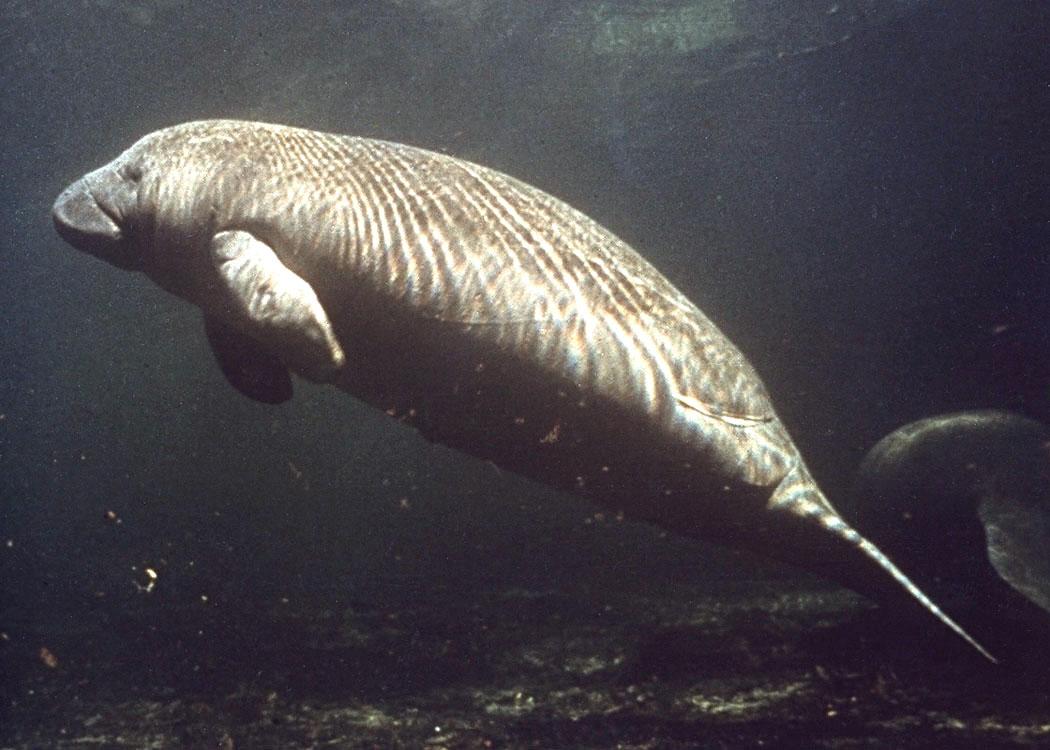 Sirenia is an order of fully aquatic, herbivorous mammals that inhabit rivers, estuaries, coastal marine waters, swamps, and marine wetlands.
*Family: Dugongidae
** Steller's sea cow, †''H. gigas'' ( Alaska only) (E)
*Family: Trichechidae
** West Indian manatee, ''T. manatus''
Sirenia is an order of fully aquatic, herbivorous mammals that inhabit rivers, estuaries, coastal marine waters, swamps, and marine wetlands.
*Family: Dugongidae
** Steller's sea cow, †''H. gigas'' ( Alaska only) (E)
*Family: Trichechidae
** West Indian manatee, ''T. manatus''
(Antillean or Caribbean manatee: , ssp. ''latirostris'' - Florida manatee: )
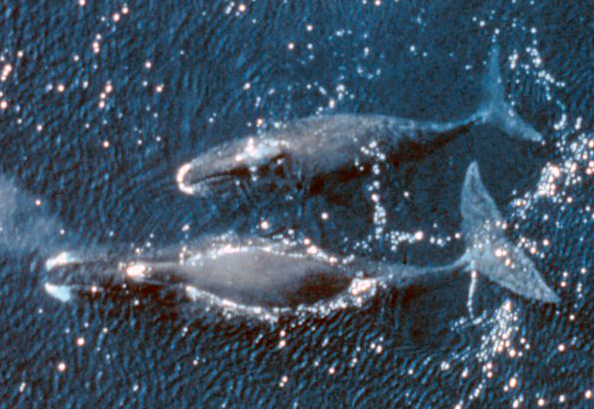
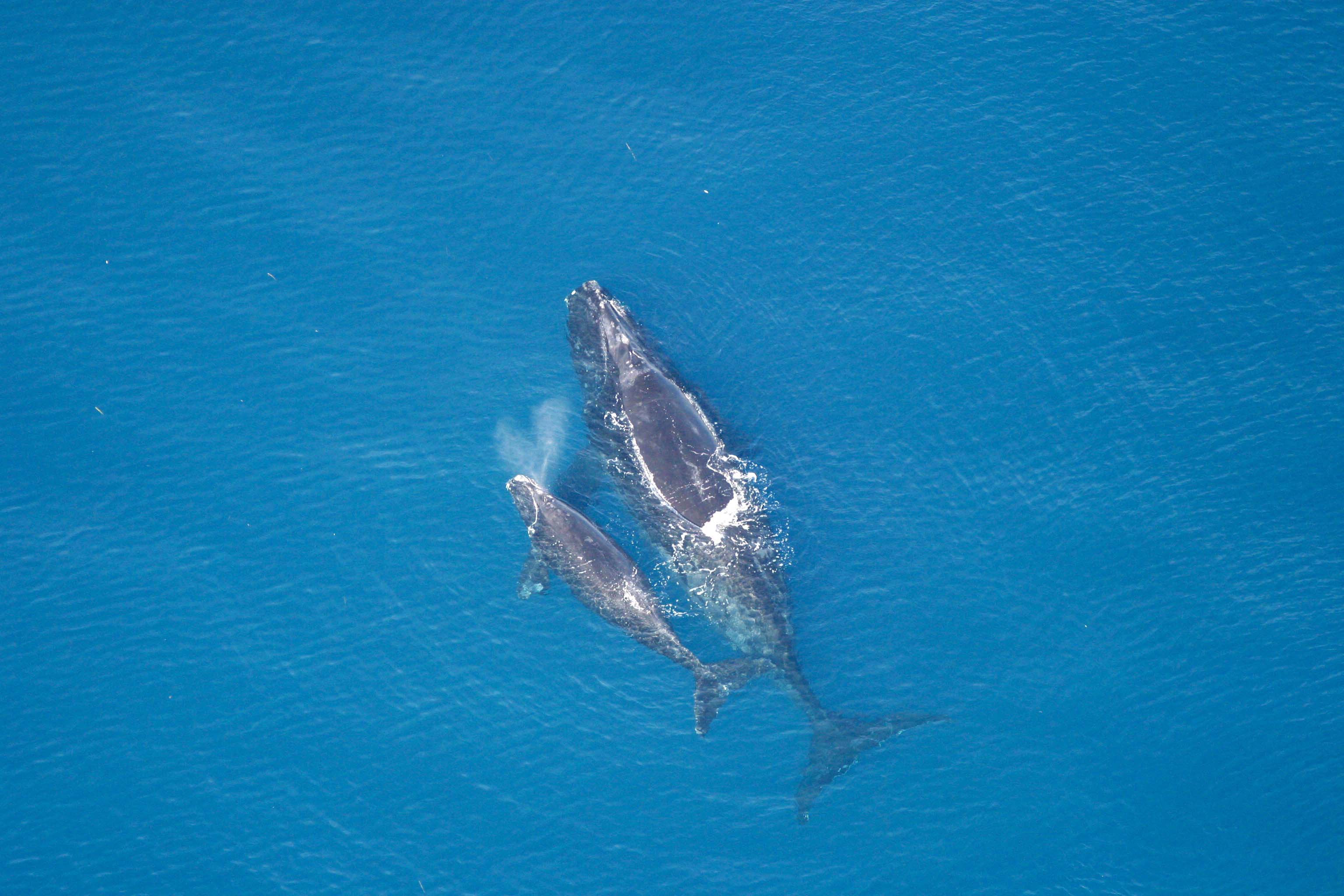


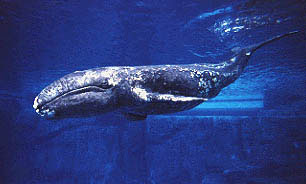

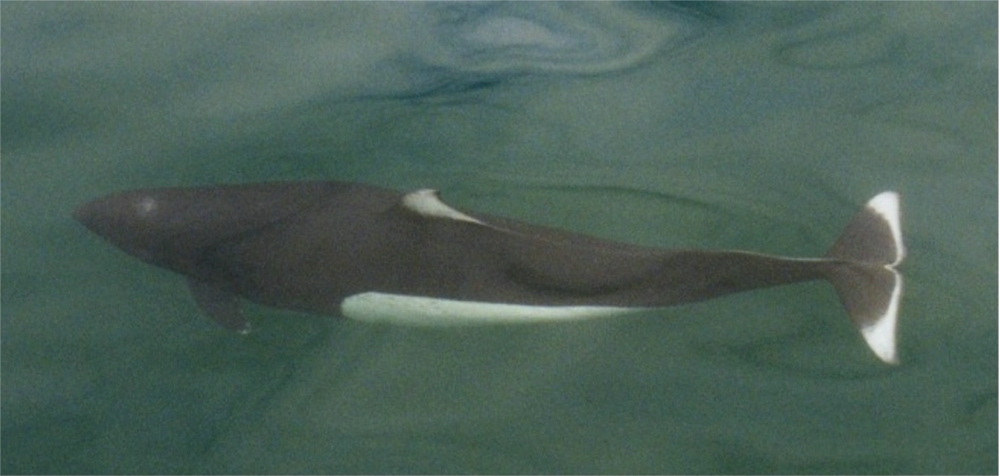


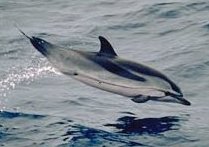

 The order Cetacea includes whales, dolphins and porpoises. They are the mammals most fully aquatic adaptation, adapted to aquatic life with a spindle-shaped nearly hairless body, protected by a thick layer of blubber, and forelimbs and tail modified to provide propulsion underwater.
*Suborder: Mysticeti
**Family: Balaenidae
*** Bowhead whale, ''B. mysticetus'' ( Alaska almost only) (Bering-Chukchi-Beaufort Sea subpopulation: )
*** North Atlantic right whale, ''E. glacialis''
*** North Pacific right whale, ''E. japonica'' (A) (Hawaiian Islands only)
The order Cetacea includes whales, dolphins and porpoises. They are the mammals most fully aquatic adaptation, adapted to aquatic life with a spindle-shaped nearly hairless body, protected by a thick layer of blubber, and forelimbs and tail modified to provide propulsion underwater.
*Suborder: Mysticeti
**Family: Balaenidae
*** Bowhead whale, ''B. mysticetus'' ( Alaska almost only) (Bering-Chukchi-Beaufort Sea subpopulation: )
*** North Atlantic right whale, ''E. glacialis''
*** North Pacific right whale, ''E. japonica'' (A) (Hawaiian Islands only)
(Northeast Pacific subpopulation: ) **Family: Balaenopteridae ***Subfamily: Balaenopterinae **** Common minke whale, ''B. acutorostrata'' **** Sei whale, ''B. borealis'' ****Species split from the Bryde's whale (''B. edeni'') (A) : ***** Bryde's whale, ''B. brydei'' ***** Rice's whale, ''B. ricei'' **** Blue whale, ''B. musculus'' (ssp. ''brevicauda'' - pygmy blue whale: , ssp. ''musculus'' North Pacific stock: ) **** Fin whale, ''B. physalus'' ***Subfamily: Megapterinae **** Humpback whale, ''M. novaeangliae'' **Family: Eschrichtiidae *** Gray whale, ''E. robustus'' *Suborder: Odontoceti **Superfamily: Platanistoidea ***Family: Monodontidae **** Beluga whale, Beluga, ''D. leucas'' (Cook Inlet subpopulation: ) **** Narwhal, ''M. monoceros'' ( Alaska only) ***Family: Phocoenidae **** Harbour porpoise, ''P. phocoena'' **** Dall's porpoise, ''P. dalli'' ***Family: Physeteridae **** Sperm whale, ''P. macrocephalus'' ***Family: Kogiidae **** Pygmy sperm whale, ''K. breviceps'' **** Dwarf sperm whale, ''K. sima'' (Hawaiian Islands only) ***Family: Beaked whale, Ziphiidae ****Subfamily: Ziphiinae ***** Cuvier's beaked whale, ''Z. cavirostris'' ****Subfamily: Berardiinae ***** Baird's beaked whale, ''B. bairdii'' (collective name for two species - Baird's beaked whale and Arnoux's beaked whale) ****Subfamily: Hyperoodontinae ***** Northern bottlenose whale, ''H. ampullatus'' ***** Tropical bottlenose whale, ''I. pacificus'' (Hawaiian Islands only) ***** Sowerby's beaked whale, ''M. bidens'' ***** Hubbs' beaked whale, ''M. carlhubbsi'' ***** Blainville's beaked whale, ''M. densirostris'' ***** Gervais' beaked whale, ''M. europaeus'' ***** Ginkgo-toothed beaked whale, ''M. ginkgodens'' ***** Hector's beaked whale, ''M. hectori'' (A) ***** True's beaked whale, ''M. mirus'' ***** Perrin's beaked whale, ''M. perrini'' ***** Pygmy beaked whale, ''M. peruvianus'' (A) ***** Stejneger's beaked whale, ''M. stejnegeri'' ***Family: Delphinidae (marine dolphins) **** Long-beaked common dolphin, ''D. capensis'' **** Short-beaked common dolphin, ''D. delphis'' **** Pygmy killer whale, ''F. attenuata'' **** Short-finned pilot whale, ''G. macrorhynchus'' **** Long-finned pilot whale, ''G. melas'' **** Risso's dolphin, ''G. griseus'' **** Fraser's dolphin, ''L. hosei'' **** Atlantic white-sided dolphin, ''L. acutus'' **** White-beaked dolphin, ''L. albirostris'' **** Northern right whale dolphin, ''L. borealis'' **** Killer whale, ''O. orca'' **** Melon-headed whale, ''P. electra'' **** False killer whale, ''P. crassidens'' **** Pantropical spotted dolphin, ''S. attenuata'' **** Clymene dolphin, ''S. clymene'' **** Striped dolphin, ''S. coeruleoalba'' **** Atlantic spotted dolphin, ''S. frontalis'' **** Spinner dolphin, ''S. longirostris'' **** Rough-toothed dolphin, ''S. bredanensis'' ****Pacific white-sided dolphin, ''S. obliquidens'' **** Common bottlenose dolphin, ''T. truncatus''
American Society of Mammalogists
- i.e. printable Field Guide to mammals of North America
Search the Division of Mammals Collections
- National Museum of Natural History, Smithsonian Institution
Mammal Species of the World, 3rd edition (MSW3)
- database of mammalian taxonomy
IUCN Red List of Threatened SpeciesSearch results
mammalia, USA, 2014-03-29)
Endangered Species Program - US Fish & Wildlife ServiceSpecies Search - US Fish & Wildlife ServiceEndangered Species Act - National Marine Fisheries Service - NOAA
List of Endangered and threatened wildlife
- US Government Printing Office {{DEFAULTSORT:List Of Mammals Of The United States Lists of mammals of the United States,
Unincorporated territories
Territories of the United States are sub-national administrative divisions overseen by the federal government of the United States. The various American territories differ from the U.S. states and tribal reservations as they are not sover ...
like for example Puerto Rico, Guam or Northern Mariana Islands are not covered. Mammals introduced and extinct in the Holocene except Pleistocene/ Holocene boundary are included.
According to the IUCN Red List 3 of these species are critically endangered, 20 endangered, 15 vulnerable
Vulnerable may refer to:
General
* Vulnerability
* Vulnerability (computing)
* Vulnerable adult
* Vulnerable species
Music
Albums
* ''Vulnerable'' (Marvin Gaye album), 1997
* ''Vulnerable'' (Tricky album), 2003
* ''Vulnerable'' (The Used album) ...
, 20 near threatened and 4 extinct
Extinction is the termination of a kind of organism or of a group of kinds (taxon), usually a species. The moment of extinction is generally considered to be the death of the last individual of the species, although the capacity to breed and ...
.
Some species are identified as indicated below:
*(A) - Accidental
*(E) - Extinct
Extinction is the termination of a kind of organism or of a group of kinds (taxon), usually a species. The moment of extinction is generally considered to be the death of the last individual of the species, although the capacity to breed and ...
*(Ex) - Extirpated (extinct in the US, but exists elsewhere in the world)
*(I) - Introduced
The following tags are used to highlight each species' conservation status as assessed by the International Union for Conservation of Nature:
(v. 2013.2, the data are current as of March 5, 2014)
and the Endangered Species Act
The Endangered Species Act of 1973 (ESA or "The Act"; 16 U.S.C. § 1531 et seq.) is the primary law in the United States for protecting imperiled species. Designed to protect critically imperiled species from extinction as a "consequence of ec ...
:
(the data are current as of March 28, 2014)
Subclass: Theria
Infraclass: Metatheria
Order: Didelphimorphia (common opossums)
---- Didelphimorphia is the order of common opossums of the Western Hemisphere. Opossums probably diverged from the basic South American marsupials in the late Cretaceous or early Paleocene. They are small to medium-sized marsupials, about the size of a large house cat, with a long snout and
Didelphimorphia is the order of common opossums of the Western Hemisphere. Opossums probably diverged from the basic South American marsupials in the late Cretaceous or early Paleocene. They are small to medium-sized marsupials, about the size of a large house cat, with a long snout and prehensile
Prehensility is the quality of an appendage or organ (anatomy), organ that has Adaptation (biology), adapted for grasping or holding. The word is derived from the Latin term ''prehendere'', meaning "to grasp". The ability to grasp is likely der ...
tail.
*Family: Didelphidae (American opossums)
**Subfamily: Didelphinae
The Didelphinae are a subfamily of opossums consisting of 15 genera and 123 species. Specimens have been collected throughout the Americas, but are predominant in South and Central America.
Some sources call this subfamily the "American opossu ...
*** Virginia opossum, ''D. virginiana''
Infraclass: Eutheria
Order: Cingulata (armadillos)
---- The armadillos are small mammals with a bony armored shell. They are native to the Americas. There are around 20 extant species. Only the nine-banded armadillo is found in the United States.
*Family: Dasypodidae (armadillos)
**Subfamily:
The armadillos are small mammals with a bony armored shell. They are native to the Americas. There are around 20 extant species. Only the nine-banded armadillo is found in the United States.
*Family: Dasypodidae (armadillos)
**Subfamily: Dasypodinae
Dasypodidae is a family of mostly extinct genera of armadillos. One genus, '' Dasypus'', is extant, with at least seven living species.
__TOC__
Classification
Below is a taxonomy of armadillos in this family.
Family Dasypodidae
*† Genu ...
*** Nine-banded armadillo, ''D. novemcinctus''
Order: Rodentia (rodents)
----















 Rodents make up the largest order of mammals, with over 40% of mammalian species. They have two incisors in the upper and lower jaw which grow continually and must be kept short by gnawing. Most rodents are small though the
Rodents make up the largest order of mammals, with over 40% of mammalian species. They have two incisors in the upper and lower jaw which grow continually and must be kept short by gnawing. Most rodents are small though the capybara
The capybaraAlso called capivara (in Brazil), capiguara (in Bolivia), chigüire, chigüiro, or fercho (in Colombia and Venezuela), carpincho (in Argentina, Paraguay and Uruguay) and ronsoco (in Peru). or greater capybara (''Hydrochoerus hydro ...
can weigh up to .
*Suborder: Hystricognathi
**Family: Erethizontidae (New World porcupines)
***Subfamily: Erethizontinae
Erethizontinae is a subfamily of the New World porcupine family Erethizontidae, and includes all species of the family with the exception of the bristle-spined rat
The bristle-spined rat (''Chaetomys subspinosus'') is an arboreal rodent from th ...
**** North American porcupine, ''E. dorsatum''
*Suborder: Sciurognathi
**Family: Aplodontiidae
The family Aplodontiidae also known as Aplodontidae, Haplodontiidae or Haploodontini is traditionally classified as the sole extant family of the suborder Protrogomorpha. It may be the sister family of the Sciuridae.
There are fossils from the ...
(mountain beaver)
*** Mountain beaver
The mountain beaver (''Aplodontia rufa'')Other names include mountain boomer, ground bear, giant mole, gehalis, lesser sasquatch, sewellel, suwellel, showhurll, showtl, and showte, as well as a number of Chinookan and other Native American terms ...
, ''A. rufa'' (ssp. ''nigra'': )
**Family: Castoridae (beavers)
*** American beaver, ''C. canadensis''
**Family: Sciuridae (squirrels)
***Subfamily: Sciurinae
Sciurinae is a subfamily of squirrels (in the family Sciuridae), uniting the flying squirrels with certain related tree squirrels. Older sources place the flying squirrels in a separate subfamily (Pteromyinae) and unite all remaining sciurids into ...
****Tribe: Pteromyini
***** Northern flying squirrel, ''G. sabrinus'' (Carolina northern flying squirrel ''G. s. coloratus'', Virginia northern flying squirrel ''G. s. fuscus'': ) *****
Humboldt's flying squirrel
Humboldt's flying squirrel (''Glaucomys oregonensis'') is one of three species of the genus '' Glaucomys'', the only flying squirrels found in North America. The squirrel was named after the naturalist Alexander von Humboldt and California's H ...
, ''G. oregonensis''
***** Southern flying squirrel, ''G. volans''
****Tribe: Sciurini
***** Abert's squirrel
Abert's squirrel or the tassel-eared squirrel (''Sciurus aberti'') is a tree squirrel in the genus ''Sciurus'' native to the southern Rocky Mountains from the United States to the northern Sierra Madre Occidental of Mexico, with concentrations fo ...
, ''S. aberti''
***** Arizona gray squirrel, ''S. arizonensis''
***** Eastern gray squirrel, ''S. carolinensis''
***** Western gray squirrel
The western gray squirrel (''Sciurus griseus'') is a tree squirrel found along the western coast of the United States and Mexico. In some places, this species has also been known as the silver-gray squirrel, the California gray squirrel, the Or ...
, ''S. griseus''
***** Mexican fox squirrel
The Mexican fox squirrel (''Sciurus nayaritensis'') is a species of tree squirrel found throughout the Sierra Madre Occidental of Mexico as far south as Jalisco — and northward into the Chiricahua Mountains of southeastern Arizona, U.S.Best, T ...
, ''S. nayaritensis''
***** Fox squirrel, ''S. niger'' (
Delmarva fox squirrel
The Delmarva fox squirrel (''Sciurus niger cinereus'') is a formerly endangered subspecies of the fox squirrel. It is native to the eastern United States. The Delmarva fox squirrel was removed from the endangered species list in November 2015.
B ...
, ''S. n. cinereus'': )
***** Douglas squirrel, ''T. douglasii''
***** Southwestern red squirrel
The southwestern red squirrel or Fremont's squirrel (''Tamiasciurus fremonti'') is a species of tree squirrel endemic to high-altitude regions of the southwestern United States.
Taxonomy
It was formerly considered conspecific with the Americ ...
, ''T. fremonti'' (
Mount Graham red squirrel
The Mount Graham red squirrel (''Tamiasciurus fremonti grahamensis'') is an endangered subspecies of the southwestern red squirrel (''Tamiasciurus fremonti'') native to the Pinaleño Mountains of Arizona. It is smaller than most other subspecies ...
, ''T. f. grahamensis'': )
***** North American red squirrel, ''T. hudsonicus''
***Subfamily: Xerinae
****Tribe: Marmotini
***** Harris's antelope squirrel, ''A. harrisii''
***** Texas antelope squirrel
The Texas antelope squirrel (''Ammospermophilus interpres'') is a species of rodent in the family Sciuridae.
It is found in Mexico and in both Texas and New Mexico within the United States.
Description
Adults can measure up to long, and weigh . ...
, ''A. interpres''
***** White-tailed antelope squirrel
The white-tailed antelope squirrel (''Ammospermophilus leucurus'') is a diurnal species of ground squirrel, scientifically classified in the order Rodentia and family Sciuridae, found in arid regions of the southwestern United States and the B ...
, ''A. leucurus''
***** San Joaquin antelope squirrel
The San Joaquin antelope squirrel or Nelson's antelope squirrel (''Ammospermophilus nelsoni''), is a species of antelope squirrel, in the San Joaquin Valley of the U.S. state of California.
Distribution and habitat
The San Joaquin antelope squi ...
, ''A. nelsoni''
***** Gunnison's prairie dog, ''C. gunnisoni''
***** White-tailed prairie dog, ''C. leucurus''
***** Black-tailed prairie dog, ''C. ludovicianus''
***** Utah prairie dog, ''C. parvidens''
***** Alaska marmot
The Alaska marmot (''Marmota broweri''), also known as the Brooks Range marmot or the Brower's marmot, is a species of rodent in the family Sciuridae. Once considered to be the same species as the hoary marmot, it is now known to be unique. Alas ...
, ''M. broweri'' ( Alaska only)
***** Hoary marmot
The hoary marmot (''Marmota caligata'') is a species of marmot that inhabits the mountains of northwest North America. Hoary marmots live near the tree line on slopes with grasses and forbs to eat and rocky areas for cover.
It is the largest Nor ...
, ''M. caligata''
***** Yellow-bellied marmot
The yellow-bellied marmot (''Marmota flaviventris''), also known as the rock chuck, is a large, stout-bodied ground squirrel in the marmot genus. It is one of fourteen species of marmots, and is native to mountainous regions of southwestern Canad ...
, ''M. flaviventris''
***** Groundhog, ''M. monax''
***** Olympic marmot
The Olympic marmot (''Marmota olympus'') is a rodent in the squirrel family, Sciuridae; it occurs only in the U.S. state of Washington (state), Washington, on the middle elevations of the Olympic Peninsula. The closest relatives of this species ...
, ''M. olympus''
***** California ground squirrel
The California ground squirrel (''Otospermophilus beecheyi''), also known as the Beechey ground squirrel, is a common and easily observed ground squirrel of the western United States and the Baja California Peninsula; it is common in Oregon and ...
, ''O. beecheyi''
***** Rock squirrel
The rock squirrel (''Otospermophilus variegatus'') is a species of rodent in the family Sciuridae and is native to Mexico and the Southwestern United States, including southern Nevada, Utah, Colorado, Arizona, New Mexico, West Texas, and the panha ...
, ''O. variegatus''
***** Golden-mantled ground squirrel
The golden-mantled ground squirrel (''Callospermophilus lateralis'') is a ground squirrel native to western North America. It is distributed in the Rocky Mountains of British Columbia and Alberta, and through much of the western United States.
...
, ''C. lateralis''
***** Cascade golden-mantled ground squirrel, ''C. saturatus''
***** Mohave ground squirrel
The Mohave ground squirrel (''Xerospermophilus mohavensis'') is a species of ground squirrel found only in the Mojave Desert in California. The squirrel was first described in 1886 by Frank Stephens of San Diego. It is listed as a threatened spe ...
, ''X. mohavensis''
***** Spotted ground squirrel, ''X. spilosoma''
***** Round-tailed ground squirrel
The round-tailed ground squirrel (''Xerospermophilus tereticaudus''), known as "Ardillón cola redonda" in Spanish, live in the desert of the Southwestern United States and Northwestern Mexico. They are called "ground squirrels" because they bur ...
, ''X. tereticaudus''
***** Franklin's ground squirrel, ''P. franklinii''
***** Mexican ground squirrel, ''I. mexicanus''
***** Rio Grande ground squirrel
The Rio Grande ground squirrel (''Ictidomys parvidens'') is a species of squirrel in the family Sciuridae
Squirrels are members of the family Sciuridae, a family that includes small or medium-size rodents. The squirrel family includes tree ...
, ''I. parvidens''
***** Thirteen-lined ground squirrel, ''I. tridecemlineatus''
***** Uinta ground squirrel
The Uinta ground squirrel (''Urocitellus armatus''), commonly called a "chisler" and ''Potgut'' in northern Utah,Noble, Katie"Animal of the Week: What is a Potgut?" ''The Green Life'', 13 April 2011. Retrieved 24 February 2019. is a species of rod ...
, ''U. armatus''
***** Belding's ground squirrel, ''U. beldingi''
***** Northern Idaho ground squirrel
The northern Idaho ground squirrel (''Urocitellus brunneus'') is a species of the largest genus of ground squirrels. This species and the Southern Idaho ground squirrel were previously considered conspecific, together called the Idaho ground s ...
, ''U. brunneus''
***** Southern Idaho ground squirrel
The southern Idaho ground squirrel (''Urocitellus endemicus'') is a species of the largest genus of ground squirrels. This species and the Northern Idaho ground squirrel were previously considered conspecific, together called the Idaho ground sq ...
, ''U. endemicus''
***** Columbian ground squirrel, ''U. columbianus''
***** Wyoming ground squirrel
The Wyoming ground squirrel (''Urocitellus elegans'') is a species of rodent in the family Sciuridae. It is endemic to the Northwestern United States
The Northwestern United States, also known as the American Northwest or simply the Northwe ...
, ''U. elegans''
***** Arctic ground squirrel
The Arctic ground squirrel (''Urocitellus parryii'') (Inuktitut: ''ᓯᒃᓯᒃ, siksik'') is a species of ground squirrel native to the Arctic and Subarctic of North America and Asia. People in Alaska, particularly around the Aleutians, refer to ...
, ''U. parryii'' ( Alaska only)
***** Richardson's ground squirrel
Richardson's ground squirrel (''Urocitellus richardsonii''), also known as the dakrat or flickertail, is a North American ground squirrel in the genus ''Urocitellus''. Like a number of other ground squirrels, they are sometimes called prairie do ...
, ''U. richardsonii''
***** Townsend's ground squirrel
Townsend's ground squirrel (''Urocitellus townsendii'') is a species of rodent in the family Sciuridae. It is found in high desert shrublands in several areas of the United States.
Distribution
Townsend's ground squirrel is found in the Great Bas ...
, ''U. townsendii'' and:
******Merriam's ground squirrel
Merriam's ground squirrel (''Urocitellus canus'') is a species of rodent in the family Sciuridae. It occurs in the western United States in Idaho, Nevada, and Oregon.
Description
Merriam's ground squirrel is a small, grey, ground squirrel with a ...
, ''U. canus''
******Piute ground squirrel
The Piute ground squirrel (''Urocitellus mollis'') is a species of rodent in the family Sciuridae. It is endemic to the Great Basin region of the western United States, where it is found in parts of California, Idaho, Nevada
Nevada ( ; ) i ...
, ''U. mollis''
******Townsend's ground squirrel
Townsend's ground squirrel (''Urocitellus townsendii'') is a species of rodent in the family Sciuridae. It is found in high desert shrublands in several areas of the United States.
Distribution
Townsend's ground squirrel is found in the Great Bas ...
, ''U. (townsendii) nancyae''
***** Washington ground squirrel
The Washington ground squirrel (''Urocitellus washingtoni'') is a squirrel that lives in the Pacific Northwest states of Washington and Oregon, United States.
Description
The Washington ground squirrel lives in sagebrush or grassland habitats in ...
, ''U. washingtoni''
***** Alpine chipmunk
The alpine chipmunk (''Neotamias alpinus'') is a species of chipmunk native to the high elevations of the Sierra Nevada of California.
Description
Alpine chipmunks share the typical pattern of genus ''Neotamias'', being gray-brown overall and ...
, ''N. alpinus''
***** Yellow-pine chipmunk
The yellow-pine chipmunk (''Neotamias amoenus'') is a species of order Rodentia in the family Sciuridae. It is found in western North America: parts of Canada and the United States.
These chipmunks are normally found in brush-covered areas, and ...
, ''N. amoenus''
***** Gray-footed chipmunk
The gray-footed chipmunk (''Neotamias canipes'') is a species of rodent in the family Sciuridae. It is endemic to New Mexico and in the Sierra Diablo and Guadalupe Mountains in the Trans-Pecos region of Texas in the United States. Its natural hab ...
, ''N. canipes''
***** Gray-collared chipmunk
The gray-collared chipmunk (''Neotamias cinereicollis'') is a species of rodent in the family Sciuridae. It is endemic to Arizona and New Mexico in the United States.
Description
The gray-collared chipmunk grows to a total length of about inclu ...
, ''N. cinereicollis''
***** Cliff chipmunk
The cliff chipmunk (''Neotamias dorsalis'') is a small, bushy-tailed squirrel that typically lives along cliff walls or boulder fields bordering Pinyon-juniper woodlands in the Western United States and Mexico (commonly spotted in northern Arizo ...
, ''N. dorsalis''
***** Merriam's chipmunk, ''N. merriami''
***** Least chipmunk
The least chipmunk (''Neotamias minimus'') is the smallest species of chipmunk and the most widespread in North America.
Description
It is the smallest species of chipmunk, measuring about in total length with a weight of . The body is gray to ...
, ''N. minimus''
***** California chipmunk, ''N. obscurus''
***** Yellow-cheeked chipmunk
The yellow-cheeked chipmunk (''Neotamias ochrogenys''), also known as the redwood chipmunk, is a species of rodent in the squirrel family, Sciuridae. It is endemic to areas near the coast of northern California in the United States where it inha ...
, ''N. ochrogenys''
***** Palmer's chipmunk
Palmer's chipmunk (''Neotamias palmeri'') is a species of rodent in the family Sciuridae, endemic to Nevada. Its natural habitat is temperate forests. It is threatened by habitat loss.
Description
Palmer's chipmunk resembles other chipmunks in ...
, ''N. palmeri''
***** Panamint chipmunk
The Panamint chipmunk (''Neotamias panamintinus'') is a species of rodent in the squirrel family, Sciuridae. It is Endemism, endemic to desert mountain areas of southeast California and southwest Nevada in the United States.
It is considered a s ...
, ''N. panamintinus''
***** Long-eared chipmunk, ''N. quadrimaculatus''
***** Colorado chipmunk
The Colorado chipmunk (''Neotamias quadrivittatus'') is a species of chipmunk in the squirrel family Sciuridae. It is Endemism, endemic to Colorado, Utah, Arizona and New Mexico in the United States.
Description
It can be found most often in co ...
, ''N. quadrivittatus''
***** Red-tailed chipmunk
The red-tailed chipmunk (''Neotamias ruficaudus'') is a species of rodent in the family Sciuridae. It is found in Alberta and British Columbia in Canada and Montana, Idaho and Washington in the United States.
Description
The red-tailed chipmunk ...
, ''N. ruficaudus''
***** Hopi chipmunk
The Hopi chipmunk, ''Neotamias rufus'', is a small chipmunk found in Colorado, Utah and Arizona in the southwestern United States. It was previously grouped with the Colorado chipmunk, ''T. quadrivittatus''. This species is listed as "Least Co ...
, ''N. rufus''
***** Allen's chipmunk
Allen's chipmunk (''Neotamias senex'') is a species of chipmunk. It is also known as the shadow chipmunk. It is native to the western United States, where it occurs in California, Nevada, and Oregon. It is a common species of the Sierra Nevada. ...
, ''N. senex''
***** Siskiyou chipmunk
The Siskiyou chipmunk (''Neotamias siskiyou'') is a species of rodent in the family Sciuridae. It is endemic to northern California and central Oregon in the United States.
Anatomy and morphology
The Siskiyou chipmunk is closest in appearance ...
, ''N. siskiyou''
***** Sonoma chipmunk
The Sonoma chipmunk (''Neotamias sonomae'') is a species of rodent in the squirrel family Sciuridae. It is endemic to northwestern California in the United States. Members of Neotamias are characterized by having 2 premolars. ''N. sonomae'' has ...
, ''N. sonomae''
***** Lodgepole chipmunk
The Lodgepole chipmunk (''Neotamias speciosus'') is a species of rodent in the family Sciuridae. It is found in the U.S. state of California
California is a state in the Western United States, located along the Pacific Coast. With nearly ...
, ''N. speciosus''
***** Eastern chipmunk, ''T. striatus''
***** Townsend's chipmunk
Townsend's chipmunk (''Neotamias townsendii'') is a species of rodent in the squirrel family, Sciuridae. It lives in the forests of the Pacific Northwest of North America, from extreme southwestern British Columbia through western Washington and ...
, ''N. townsendii''
***** Uinta chipmunk, ''N. umbrinus''
**Family: Geomyidae
*** Desert pocket gopher, ''G. arenarius''
*** Attwater's pocket gopher
Attwater's pocket gopher (''Geomys attwateri'') is a species of rodent in the family Geomyidae. It is endemic
Endemism is the state of a species being found in a single defined geographic location, such as an island, state, nation, country ...
, ''G. attwateri''
*** Baird's pocket gopher, ''G. breviceps''
*** Plains pocket gopher, ''G. bursarius'' and:
****Hall's pocket gopher
Geo. Hall & Sons, more recently known as Hall's, was a soft drink manufacturer founded in 1849 in Marryatville, South Australia (a suburb of Adelaide) by English immigrant George Hall (1818-1881). The plant later moved to Norwood, using water fr ...
, ''G. jugossicularis''
****Sand Hills pocket gopher
Sand is a granular material composed of finely divided mineral particles. Sand has various compositions but is defined by its grain size. Sand grains are smaller than gravel and coarser than silt. Sand can also refer to a textural class of s ...
, ''G. lutescens''
*** Knox Jones's pocket gopher, ''G. knoxjonesi''
*** Texas pocket gopher
The Texas pocket gopher (''Geomys personatus'') is a species of rodent in the family Geomyidae. It is found in Tamaulipas in Mexico and in Texas in the United States.
Description
Males grow to a length of about including a tail of about . Fem ...
, ''G. personatus'' and:
**** Strecker's pocket gopher, ''G. streckeri''
*** Southeastern pocket gopher, ''G. pinetis''
*** Llano pocket gopher, ''G. texensis''
*** Yellow-faced pocket gopher, ''P. castanops''
*** Botta's pocket gopher
Botta's pocket gopher (''Thomomys bottae'') is a pocket gopher native to western North America. It is also known in some sources as valley pocket gopher, particularly in California. Both the specific and common names of this species honor Paul-É ...
, ''T. bottae''
*** Camas pocket gopher
The camas pocket gopher (''Thomomys bulbivorus''), also known as the camas rat or Willamette Valley gopher, is a rodent, the largest member in the genus '' Thomomys'', of the family Geomyidae. First described in 1829, it is endemic to the Will ...
, ''T. bulbivorus''
*** Wyoming pocket gopher
The Wyoming pocket gopher (''Thomomys clusius'') is a species of gopher that is endemic to the United States. Between 1915 and 1979, it was generally considered to be a subspecies of the northern pocket gopher.
Description
The Wyoming pocket go ...
, ''T. clusius''
*** Idaho pocket gopher, ''T. idahoensis''
*** Mazama pocket gopher
The Mazama pocket gopher (''Thomomys mazama'') is a smooth-toothed pocket gopher restricted to the Pacific Northwest. The herbivorous species ranges from coastal Washington, through Oregon, and into north-central California. Four subspecies of th ...
, ''T. mazama''
*** Mountain pocket gopher
The mountain pocket gopher (''Thomomys monticola'') is a species of rodent in the family Geomyidae. It is endemic to California and Nevada
Nevada ( ; ) is a state in the Western region of the United States. It is bordered by Oregon to the ...
, ''T. monticola''
*** Northern pocket gopher, ''T. talpoides''
*** Townsend's pocket gopher
Townsend's pocket gopher (''Thomomys townsendii'') is a species of pocket gopher endemic to the northwestern United States.
Description
Townsend's pocket gopher is a relatively large gopher, measuring in total length, including a tail long. Ad ...
, ''T. townsendii''
*** Southern pocket gopher
The southern pocket gopher (''Thomomys umbrinus'') is a species of rodent in the family Geomyidae. It is found in Mexico and the United States, usually in high altitude grassland and shrubland. It feeds on plant material and has an extensive burr ...
, ''T. umbrinus''
**Family: Heteromyidae
***Subfamily: Dipodomyinae
**** Agile kangaroo rat
The agile kangaroo rat (''Dipodomys agilis'') is a species of rodent in the family Heteromyidae. It is endemic to southern California in the United States.
Relatively little information has been published on the natural history, life history, ec ...
, ''D. agilis''
**** California kangaroo rat
The California kangaroo rat (''Dipodomys californicus'') is a species of rodent in the family Heteromyidae. However, populations are declining, having not fully recovered after the drought in California from 2013 to 2015 destroyed their habitat ( ...
, ''D. californicus''
**** Gulf Coast kangaroo rat, ''D. compactus''
**** Desert kangaroo rat, ''D. deserti''
**** Texas kangaroo rat, ''D. elator''
**** Heermann's kangaroo rat, ''D. heermanni'' (
Morro Bay kangaroo rat
The Morro Bay kangaroo rat, ''Dipodomys heermanni morroensis'', is endemic to San Luis Obispo County, California.
This subspecies of “Heermann” kangaroo rat today lives only in a restricted 2 km area south of Morro Bay in San Luis ...
, ''D. h. morroensis'': )
**** Giant kangaroo rat, ''D. ingens''
**** Merriam's kangaroo rat, ''D. merriami'' (San Bernardino kangaroo rat
The San Bernardino kangaroo rat (''Dipodomys merriami parvus'') is a species of rodent in the family Heteromyidae. It is one of 19 recognized subspecies of Merriam's kangaroo rat (''Dipodomys merriami'') that are spread throughout the arid regi ...
, ''D. m. parvus'': )
**** Chisel-toothed kangaroo rat
The chisel-toothed kangaroo rat (''Dipodomys microps'') is a species of rodent in the family Heteromyidae.
There are 13 sub-species. Saltbush leaves are a major dietary component, requiring specialized physiology to eliminate the salt while reta ...
, ''D. microps''
**** Fresno kangaroo rat
The Fresno kangaroo rat or San Joaquin kangaroo rat (''Dipodomys nitratoides'') is a species of rodent in the family Heteromyidae. It is endemic to areas within and near the San Joaquin Valley of California in the United States. Habitat destruct ...
, ''D. nitratoides'' (Fresno subspecies ''D. n. exilis'' and Tipton kangaroo rat
The Tipton kangaroo rat (''Dipodomys nitratoides nitratoides''), is a subspecies of the San Joaquin kangaroo rat, a rodent in the family Heteromyidae.
Description
Adult Tipton kangaroo rats have small forefeet, exceptionally large hind feet, an ...
, ''D. n. nitratoides'': )
**** Ord's kangaroo rat, ''D. ordii''
**** Panamint kangaroo rat, ''D. panamintinus''
**** Banner-tailed kangaroo rat
The banner-tailed kangaroo rat (''Dipodomys spectabilis'') is a species of rodent in the family Heteromyidae. It is found in arid environments in the southwestern United States and Mexico where it lives in a burrow by day and forages for seeds an ...
, ''D. spectabilis''
**** Stephens' kangaroo rat, ''D. stephensi''
**** Dulzura kangaroo rat, ''D. simulans''
**** Narrow-faced kangaroo rat
The narrow-faced kangaroo rat (''Dipodomys venustus'') is a species of rodent in the family Heteromyidae. It is endemic to California in the United States.
Like all other heteromyids, the dental formula
Dentition pertains to the development ...
, ''D. venustus'' and:
***** Big-eared kangaroo rat
The big-eared kangaroo rat (''Dipodomys elephantinus'') is a kangaroo rat
Kangaroo rats, small mostly nocturnal rodents of genus ''Dipodomys'', are native to arid areas of western North America. The common name derives from their bipedal fo ...
, ''D. (venustus) elephantinus'' ('' D. venustus'': ) ****
Dark kangaroo mouse
The dark kangaroo mouse (''Microdipodops megacephalus'') is a species of rodent in the family Heteromyidae. It is found in California, Idaho, Nevada, Oregon and Utah in the United States.
Description
The dark kangaroo mouse (''Microdipodops mega ...
, ''M. megacephalus''
**** Pale kangaroo mouse
The pale kangaroo mouse or Soda Spring Valley kangaroo mouse (''Microdipodops pallidus'') is a species of rodent in the family Heteromyidae. It is endemic to California and Nevada in the United States.
Description
Named for its pale-furred back ...
, ''M. pallidus''
***Subfamily: Heteromyinae
Heteromyinae is a subfamily of rodents in the family Heteromyidae, commonly known as spiny pocket mice. It contains a single extant genus, ''Heteromys'', as well as the extinct genera ''Diprionomys'' and ''Metaliomys''. ''Heteromys'' was recentl ...
**** Mexican spiny pocket mouse, ''L. irroratus''
***Subfamily: Perognathinae
Perognathinae is a subfamily of rodents consisting of two genera of pocket mice. Most species live in complex burrows within the deserts and grasslands of western North America, They feed mostly on seeds and other plant parts, which they carry i ...
**** Bailey's pocket mouse
Bailey's pocket mouse (''Chaetodipus baileyi'') is a species of rodent of the subfamily Perognathinae, family Heteromyidae. It is found in Baja California, Sinaloa and Sonora in Mexico and in California, Arizona and New Mexico in the United Sta ...
, ''C. baileyi''
**** California pocket mouse
The California pocket mouse (''Chaetodipus californicus'') is a species of nocturnal and primarily solitary rodent in the family Heteromyidae.
Distribution
''Chaetodipus californicus'' is native to California in the western United States and nor ...
, ''Cv californicus''
**** Nelson's pocket mouse
Nelson's pocket mouse (''Chaetodipus nelsoni'') is a species of rodent in the family Heteromyidae. It is found in Mexico and in New Mexico and Texas in United States. It is named in honor of the American naturalist Edward William Nelson.
Descrip ...
, ''C. nelsoni''
**** Chihuahuan pocket mouse
The Chihuahuan pocket mouse (''Chaetodipus eremicus'') is a species of Heteromyidae, heteromyid rodent found in the southwestern United States and Mexico. It was formerly considered a subspecies of the desert pocket mouse (''C. pencillatus''), bu ...
, ''C. eremicus''
**** San Diego pocket mouse
The San Diego pocket mouse (''Chaetodipus fallax'') is a rodent species in the family Heteromyidae. It occupies the northern region of Baja California near San Diego extending into Mexico.
Description
The San Diego pocket mouse occupies the no ...
, ''C. fallax''
**** Long-tailed pocket mouse
The long-tailed pocket mouse (''Chaetodipus formosus'') is a species of rodent in the family Heteromyidae.
It is found in Arizona, California, Nevada and Utah in the United States and Baja California in Mexico.
References
*Patton, J. L. 200 ...
, ''C. formosus''
**** Hispid pocket mouse, ''C. hispidus''
**** Rock pocket mouse
The rock pocket mouse (''Chaetodipus intermedius'') is one of 19 species of pocket mice in the genus ''Chaetodipus''. It is sometimes grouped in the genus ''Perognathus''.
Description
Found mainly in rocky outcrops in the deserts of the southwes ...
, ''C. intermedius''
**** Desert pocket mouse, ''C. penicillatus''
**** Baja pocket mouse
The Baja pocket mouse (''Chaetodipus rudinoris'') is a species of rodent in the family Heteromyidae. The species occurs in southern California, Baja California and on islands in the Gulf of California
The Gulf of California ( es, Golfo de Ca ...
, ''C. rudinoris''
**** Spiny pocket mouse
The spiny pocket mouse (''Chaetodipus spinatus'') is a species of rodent in the family Heteromyidae and order Rodentia. It is found in Baja California in Mexico and in Arizona, California and Nevada.
Description
The spiny pocket mouse has long ...
, ''C. spinatus''
**** White-eared pocket mouse
The white-eared pocket mouse (''Perognathus alticolus'') is a species of rodent in the family Heteromyidae. It is endemic to the San Bernardino Mountains and the Tehachapi Mountains of southern California in the United States. There are two subs ...
, ''P. alticola''
**** Arizona pocket mouse
The Arizona pocket mouse (''Perognathus amplus'') is a rodent native to the Sonoran desert. It is a small mouse with a thinly furred tail that is smooth from base to tip (i.e. it has no tuft). In color it ranges from tan to orange. It is a noctu ...
, ''P. amplus''
**** Olive-backed pocket mouse
The olive-backed pocket mouse (''Perognathus fasciatus'') is a species of rodent in the family Heteromyidae. It is found in the central Great Plains of Canada and the United States where it is widespread and relatively common; the IUCN consider ...
, ''P. fasciatus''
**** Plains pocket mouse
The plains pocket mouse (''Perognathus flavescens'') is a heteromyid rodent of North America.Monk, R. Richard, and J. Knox Jones.Perognathus flavescens" Mammalian Species 525 (1996): 1-4. It ranges from southwestern Minnesota and southeastern N ...
, ''P. flavescens''
**** Silky pocket mouse
The silky pocket mouse (''Perognathus flavus'') is a species of rodent in the family Heteromyidae. It is found in northern and central Mexico and the southwest region of the United States. It is a species of least concern, according to the IUCN, ...
, ''P. flavus''
**** San Joaquin pocket mouse
The San Joaquin pocket mouse or Salinas pocket mouse (''Perognathus inornatus'') is a species of rodent in the family Heteromyidae. It is endemic to California in the United States where it lives in desert and semi-desert habitats.
Description
P ...
, ''P. inornatus''
**** Little pocket mouse, ''P. longimembris'' (
Pacific pocket mouse
The Pacific pocket mouse, ''Perognathus longimembris pacificus'', is endemic to California. It lives in sandy coastal soils of the coastal sage scrub ecoregion. It eats seeds and some insects. It was believed to be extinct until 1993, when a smal ...
, ''P. l. pacificus'': )
**** Merriam's pocket mouse, ''P. merriami''
**** Columbia Plateau pocket mouse, ''P. parvus''
**Family: Dipodidae (jerboas)
***Subfamily: Zapodinae
Zapodidae, the jumping mice, is a family of mouse-like rodents in North America and China.
Although mouse-like in general appearance, these rodents are distinguished by their elongated hind limbs, and, typically, by the presence of four pairs o ...
**** Woodland jumping mouse
The woodland jumping mouse (''Napaeozapus insignis'') is a species of jumping mouse found in North America. It can jump up to using its extremely strong feet and long tail.
Taxonomy
Representatives of the family Dipodidae are found in the nort ...
, ''N. insignis''
**** Meadow jumping mouse
The meadow jumping mouse (''Zapus hudsonius'') is the most widely distributed mouse in the family Zapodidae. Its range extends from the Atlantic coast in the east to the Great Plains west, and from the arctic tree lines in Canada and Alaska to ...
, ''Z. hudsonius'' ( Preble's meadow jumping mouse, ''Z. h. preblei'': ) ****
Western jumping mouse
The western jumping mouse (''Zapus princeps''), is a species of rodent in the family Zapodidae. It is found in Canada and the United States.
Western jumping mice evolved during the Pleistocene, possibly from the fossil species '' Zapus burti'', ...
, ''Z. princeps''
**** Pacific jumping mouse
The Pacific jumping mouse (''Zapus trinotatus'') is a species of rodent in the family Zapodidae. Found in Canada and the United States, its natural habitats are temperate grassland and swamps.
Description
Pacific jumping mice can be distinguis ...
, ''Z. trinotatus''
**Family: Cricetidae
***Subfamily: Arvicolinae
**** White-footed vole
The white-footed vole (''Arborimus albipes'') is a species of rodent in the family Cricetidae. It is found only in the United States. Its natural habitat is temperate forest
A forest is an area of land dominated by trees. Hundreds of def ...
, ''A. albipes''
**** Red tree vole, ''A. longicaudus''
**** California red tree mouse, ''A. pomo''
**** Western red-backed vole, ''C. californicus''
**** Southern red-backed vole
The southern red-backed vole or Gapper's red-backed vole (''Myodes gapperi'') is a small slender vole found in Canada and the northern United States. It is closely related to the western red-backed vole (''Myodes californius''), which lives to th ...
, ''C. gapperi''
**** Northern red-backed vole, ''C. rutilus'' ( Alaska only)
**** Northern collared lemming, ''D. groenlandicus'' ( Alaska only)
**** Nelson's collared lemming
Nelson's collared lemming (Dicrostonyx nelsoni) is a species of rodent in the family Cricetidae.
It is found in western and southwestern Alaska in the United States
The United States of America (U.S.A. or USA), commonly known as the Uni ...
, ''D. nelsoni'' ( Alaska only)
**** Unalaska collared lemming
The Unalaska collared lemming (''Dicrostonyx unalascensis'') is a species of rodent in the family Cricetidae.
This species is found on two islands, Umnak and Unalaska, in the Aleutian Archipelago of Alaska in the United States.
Its natural habita ...
, ''D. unalascensis'' ( Alaska only)
**** Sagebrush vole
The sagebrush vole (''Lemmiscus curtatus'') is a tiny vole found in western North America. This is the only member of genus ''Lemmiscus''.
They are somewhat similar in appearance to lemmings. They have chunky bodies with short legs and a very sh ...
, ''L. curtatus''
**** North American brown lemming
The Canadian lemming or Nearctic brown lemming (''Lemmus trimucronatus'') is a small North American lemming.
Taxonomy
The taxonomy of the Canadian lemming is tangled with the Siberian brown lemming and the Beringian lemming.
The Canadian lemm ...
, ''Lemmus trimucronatus'' ( Alaska only)
**** Insular vole
The insular vole or St. Matthew Island vole (''Microtus abbreviatus'') is a species of rodent in the family Cricetidae. It occurs only on St. Matthew Island and the adjacent Hall Island, in Alaska. On these Bering Sea islands, insular voles li ...
, ''M. abbreviatus'' ( Alaska only)
**** California vole, ''M. californicus'' (ssp. ''scirpen'': )
**** Gray-tailed vole
The gray-tailed vole (''Microtus canicaudus'') also known as the gray-tailed meadow vole or gray-tailed meadow mouse, is a rodent in the genus ''Microtus'' (small-eared "meadow voles") of the family Cricetidae. Voles are small mammals, and this ...
, ''M. canicaudus''
**** Rock vole
The rock vole (''Microtus chrotorrhinus'') is a medium-sized vole found in eastern North America. It is also called the yellow-nosed vole.
Description
This species is similar in appearance to the larger taiga vole. It has short ears and a long t ...
, ''M. chrotorrhinus''
**** Western meadow vole, ''M. drummondii''
**** Florida salt marsh vole, ''M. dukecampbelli'' (''M. p. dukecampbelli'': )
**** Long-tailed vole, ''M. longicaudus''
**** Mexican vole, ''M. mexicanus'' (including ''M. mogollonensis'': , ssp. ''hualpaiensis'': )) and: ***** Mogollon vole, ''M. mogollonensis'' **** Singing vole, ''M. miurus'' ( Alaska only) **** Montane vole, ''M. montanus'' **** Prairie vole, ''M. ochrogaster'' ****
Tundra vole
The tundra vole (''Microtus oeconomus'') or root vole is a medium-sized vole found in Northern and Central Europe, Asia, and northwestern North America, including Alaska and northwestern Canada. In the western part of the Netherlands, the tundra ...
, ''M. oeconomus'' ( Alaska only)
**** Creeping vole
The creeping vole (''Microtus oregoni''), sometimes known as the Oregon meadow mouse, is a small rodent in the family Cricetidae. Ranging across the Pacific Northwest of North America, it is found in forests, grasslands, woodlands, and chaparral ...
, ''M. oregoni''
**** Eastern meadow vole
The eastern meadow vole (''Microtus pennsylvanicus''), sometimes called the field mouse or meadow mouse, is a North American vole found in eastern Canada and the United States. Its range extends farther south along the Atlantic coast.
The west ...
, ''M. pennsylvanicus'' (ssp. '' breweri'': )
**** Woodland vole
The woodland vole (''Microtus pinetorum'') is a small vole found in Eastern United States, eastern North America. It is also known as the pine vole.
Characteristics
The woodland vole has a head and body length ranging between with a short tail ...
, ''M. pinetorum''
**** Water vole, ''M. richardsoni''
**** Townsend's vole
Townsend's vole (''Microtus townsendii'') is a species of rodent in the family Cricetidae, the sister species of '' M. canicaudus''. It is found in temperate grasslands of British Columbia in Canada and in the states of Washington and Oregon in t ...
, ''M. townsendii''
**** Taiga vole, ''M. xanthognathus'' ( Alaska only)
**** Round-tailed muskrat
The round-tailed muskrat (''Neofiber alleni'') is a species of rodent in the family Cricetidae, sometimes called the Florida water rat.Muskrat
The muskrat (''Ondatra zibethicus'') is a medium-sized semiaquatic rodent native to North America and an introduced species in parts of Europe, Asia, and South America. The muskrat is found in wetlands over a wide range of climates and habitat ...
, ''O. zibethicus''
**** Western heather vole
The western heather vole (''Phenacomys intermedius'') is a small vole found in western North America. Until recently, the eastern heather vole, (''Phenacomys ungava''), was considered to be a subspecies. They have short ears with stiff orange ha ...
, ''P. intermedius''
**** Eastern heather vole
The eastern heather vole, (''Phenacomys ungava''), is a small North American vole. Until recently, this species was considered to belong to the same species as the western heather vole, ''Phenacomys intermedius''. It is also called the Ungava vo ...
, ''P. ungava''
**** Northern bog lemming
The northern bog lemming (''Synaptomys borealis'') is a small North American lemming. It is one of two species in the genus ''Synaptomys'', the other being the southern bog lemming.
Description
They have cylindrical bodies covered with long grey ...
, ''S. borealis''
**** Southern bog lemming, ''S. cooperi''
***Subfamily: Neotominae
**** Northern pygmy mouse
The northern pygmy mouse (''Baiomys taylori'') is a species of rodent in the family Cricetidae. It is known as ''ratón-pigmeo norteño'' in the Spanish-speaking areas of its range. It is found in Mexico and the United States.
Parasites of the ...
, ''B. taylori''
**** White-throated woodrat
The white-throated woodrat (''Neotoma albigula'') is a species of rodent in the family Cricetidae. It is found from central Mexico north to Utah and Colorado in the United States. It is primarily a western species in the United States, extending ...
, ''N. albigula''
**** Bryant's woodrat
Bryant's woodrat (''Neotoma bryanti'') is a species of new-world rodent in the family Cricetidae native to the Southwestern United States and Mexico
Mexico (Spanish: México), officially the United Mexican States, is a country in the south ...
, ''N. bryanti''
**** Bushy-tailed woodrat
The bushy-tailed woodrat, or packrat (''Neotoma cinerea'') is a species of rodent in the family Cricetidae found in Canada and the United States.
Its natural habitats are boreal forests, temperate forests, dry savanna, temperate shrubland, and t ...
, ''N. cinerea''
**** Arizona woodrat
The Arizona woodrat (''Neotoma devia'') is a species of rodent in the family Cricetidae.
It is found in Mexico and United States
The United States of America (U.S.A. or USA), commonly known as the United States (U.S. or US) or America, i ...
, ''N. devia''
**** Eastern woodrat
The eastern woodrat (''Neotoma floridana''), also known as the Florida woodrat or bush rat, is a pack rat native to the central and Eastern United States. It constructs large dens that may serve as nests for many generations and stores food in o ...
, ''N. floridana'' ( Key Largo woodrat, ''N. f. smalli'': )
**** Dusky-footed woodrat
The dusky-footed woodrat (''Neotoma fuscipes'') is a species of nocturnal rodent in the family Cricetidae. They are commonly called "packrats" or "trade rats" and build large, domed dens that can reach several feet in height. Coyotes and other ...
, ''N. fuscipes'' (ssp. ''riparia'': )
**** Desert woodrat
The desert woodrat (''Neotoma lepida'') is a species of pack rat native to desert regions of western North America.
Description
Desert woodrats are relatively small for pack rats, measuring in length, including a tail. They weigh from , wi ...
, ''N. lepida''
**** White-toothed woodrat
''Neotoma leucodon'' is a species of rodent in the family Cricetidae. Although originally named from San Luis Potosí, Mexico, as a species by Merriam, the white-toothed woodrat was long considered to be a synonym of the white-throated woodrat ( ...
, ''Nv leucodon''
**** Big-eared woodrat, ''N. macrotis''
**** Allegheny woodrat
The Allegheny woodrat (''Neotoma magister''), is a species of "pack rat" in the genus ''Neotoma''. Once believed to be a subspecies of the eastern woodrat (''Neotoma floridana''), extensive DNA analysis has proven it to be a distinct species.
D ...
, ''N. magister''
**** Mexican woodrat
The Mexican woodrat (''Neotoma mexicana'') is a medium-sized pack rat. Distribution and habitat
It ranges from the United States (Utah, Colorado, New Mexico and parts of Arizona and Trans-Pecos Texas) south to Honduras. Although occurring at l ...
, ''N. mexicana''
**** Southern plains woodrat
The Southern Plains woodrat (''Neotoma micropus'') is a species of rodent in the family Cricetidae. It is found in northwest Mexico and in Colorado, Kansas, New Mexico, Oklahoma, and Texas in the United States. The subspecies ''Neotoma micropus ...
, ''N. micropus''
**** Stephen's woodrat, ''N. stephensi''
**** Golden mouse
The golden mouse (''Ochrotomys nuttalli'') is a species of New World mouse. It is usually 5–8 inches (12–25 cm) in body length, and has a soft pelage that ranges from golden-brownish to burnt orange in color. The genus name comes ...
, ''O. nuttalli''
**** Texas mouse
The Texas mouse (''Peromyscus attwateri'') is a species of rodent in the family Cricetidae. It is found in Arkansas, Kansas, Missouri, Oklahoma, and Texas in the United States. This species is named in honor of Henry Philemon Attwater.
Descrip ...
, ''P. attwateri''
**** Brush mouse
The brush mouse (''Peromyscus boylii'') is a species of rodent in the family Cricetidae. It is found in mountainous areas of Mexico and the western United States at altitudes over .
Description
The brush mouse is medium-sized, with small ears a ...
, ''P. boylii''
**** California mouse
The California deermouse or California mouse (''Peromyscus californicus'') is a species of rodent in the subfamily Neotominae in the family Cricetidae. It is the only species in the ''Peromyscus californicus'' species group. It is found in nort ...
, ''P. californicus''
**** Canyon mouse
The canyon mouse (''Peromyscus crinitus'') is a gray-brown mouse found in many states of the western United States and northern Mexico. Its preferred habitat is arid, rocky desert. Vegetation has little or no effect on the distribution of canyon ...
, ''P. crinitus''
**** Cactus mouse
The cactus mouse (''Peromyscus eremicus'') is a species of rodent in the family Cricetidae. It is a species of the genus ''Peromyscus'', a closely related group of New World mice often called "deermice" (although the term more commonly refers sp ...
, ''P. eremicus''
**** Northern Baja deer mouse
The Northern Baja deer mouse (''Peromyscus fraterculus'') is a species of deer mouse native to Southern California and the Baja California peninsula as well as several islands in the Gulf of California
The Gulf of California ( es, Golfo de C ...
, ''P. fraterculus''
**** Cotton mouse
The cotton mouse (''Peromyscus gossypinus'') is a species of rodent in the family Cricetidae found in the woodlands of the US South.
Description
Adults are about long, with a tail around , and weigh 34-51 g. Its general appearance is very si ...
, ''P. gossypinus'' (ssp. ''allapaticola'': )
**** Gambel's deermouse, ''P. gambelii''
**** Osgood's mouse, ''P. gratus''
**** Northwestern deer mouse
The northwestern deer mouse or Keen's mouse (''Peromyscus keeni'') is a species of rodent in the family Cricetidae. It is found in British Columbia in Canada and in Alaska and Washington in the United States. It was named after the Rev. John Hen ...
, ''P. keeni''
**** southern white-ankled mouse, ''P. pectoralis''
**** Southern deermouse, ''P. labecula''
**** White-footed mouse, ''P. leucopus''
**** Eastern deermouse, ''P. maniculatus''
**** Black-eared mouse
The black-eared mouse (''Peromyscus melanotis''), or black-eared deer mouse, is a species of rodent in the family Cricetidae, native to North America.
Description
The black-eared mouse is one of the smaller species in the genus ''Peromyscus'', m ...
, ''P. melanotis''
**** Mesquite mouse
The mesquite mouse (''Peromyscus merriami'') is a species of rodent in the family Cricetidae found in Mexico and in Arizona in the United States
The United States of America (U.S.A. or USA), commonly known as the United States (U.S. or U ...
, ''P. merriami''
**** Northern rock mouse
The northern rock mouse (''Peromyscus nasutus'') is a species of rodent in the family Cricetidae. It is found in Mexico and the United States
The United States of America (U.S.A. or USA), commonly known as the United States (U.S. or US) ...
, ''P. nasutus''
**** Oldfield mouse, ''P. polionotus'' ( Choctawatchee beach mouse, ''P. p. allophrys'', Perdido Key beach mouse
The Perdido Key beach mouse (''Peromyscus polionotus trissyllepsis'') is an endangered subspecies of the oldfield mouse. It is found on Perdido Key, Florida. The small white and gray mouse, weighing only , blends in well with the white quartz sa ...
, ''P. p. trissyllepsis'', St. Andrews beach mouse, ''P. p. peninsularis'', Alabama beach mouse, ''P. p. ammobates'' and Anastasia Island beach mouse, ''P. p. phasma'': , Southeastern beach mouse
The points of the compass are a set of horizontal, Radius, radially arrayed compass directions (or Azimuth#In navigation, azimuths) used in navigation and cartography. A compass rose is primarily composed of four cardinal directions—north, east ...
, ''P. p. niveiventris'': )
****Western deermouse
The western deermouse or western deer mouse (''Peromyscus sonoriensis'') is a rodent native to North America. It is widespread throughout the western half of the continent, mainly in areas west of the Mississippi River.
Taxonomy
It was formerl ...
, ''P. sonoriensis''
**** Pinyon mouse
The pinyon mouse (''Peromyscus truei'') is native to the southwestern United States and Baja California in Mexico. These medium-sized mice are often distinguished by their relatively large ears. The range of this species extends from southern ...
, ''P. truei''
**** Florida mouse
The Florida Mouse (''Podomys floridanus'') is a species of rodent in the Cricetidae family. It is the only species in the genus ''Podomys''. It is found only in the United States.
Its natural habitat is temperate grassland. It is threatened by ...
, ''P. floridanus''
**** Fulvous harvest mouse
The fulvous harvest mouse (''Reithrodontomys fulvescens'') is a species of rodent in the family Cricetidae. It is found in El Salvador, Guatemala, Honduras, Mexico, Nicaragua, and the United States.
Description
About 17 subspecies of ''R. ful ...
, ''R. fulvescens''
**** Eastern harvest mouse
The eastern harvest mouse (''Reithrodontomys humulis'') is a species of rodent in the family Cricetidae.
It is endemic to the Southeastern United States.
Its natural habitats are subtropical or tropical seasonally wet or flooded lowland grassland ...
, ''R. humulis''
**** Western harvest mouse
The western harvest mouse (''Reithrodontomys megalotis'') is a small neotomine mouse native to most of the western United States. Many authorities consider the endangered salt marsh harvest mouse to be a subspecies, but the two are now usually ...
, ''R. megalotis''
**** Plains harvest mouse, ''R. montanus''
**** Salt marsh harvest mouse, ''R. raviventris''
***Subfamily: Sigmodontinae
The rodent subfamily Sigmodontinae includes New World rats and mice, with at least 376 species. Many authorities include the Neotominae and Tylomyinae as part of a larger definition of Sigmodontinae. When those genera are included, the specie ...
**** Chihuahuan grasshopper mouse
Mearns's grasshopper mouse or the Chihuahuan grasshopper mouse (''Onychomys arenicola'') is a grasshopper mouse found in southwestern New Mexico, West Texas, and north-central Mexico. They are similar to ''Onychomys torridus'', but differ in kar ...
, ''O. arenicola''
**** Northern grasshopper mouse
The northern grasshopper mouse (''Onychomys leucogaster'') is a North American carnivorous rodent of the family Cricetidae. It ranges over much of the western part of the continent, from southern Saskatchewan and central Washington to Tamaulipas ...
, ''O. leucogaster''
**** Southern grasshopper mouse, ''O. torridus''
****Coues' rice rat
''Oryzomys couesi'', also known as Coues's rice rat, is a semiaquatic rodent in the family Cricetidae occurring from southernmost Texas through Mexico and Central America into northwestern Colombia. It is usually found in wet habitats, such as ...
, ''O. couesi''
**** Common marsh rice rat, ''O. palustris'' (ssp. ''natator'': )
**** Arizona cotton rat, ''S. arizonae''
**** Tawny-bellied cotton rat
The tawny-bellied cotton rat (''Sigmodon fulviventer'') is a species of rodent in the family Cricetidae. It is found in Mexico and in the US states of Arizona and New Mexico.
Description
Sexual dimorphism is not present, but the adult male ...
, ''S. fulviventer''
**** Hispid cotton rat
The hispid cotton rat (''Sigmodon hispidus'') is a rodent species long thought to occur in parts of South America, Central America, and southern North America. However, recent taxonomic revisions, based on mitochondrial DNA sequence data, have ...
, ''S. hispidus''
**** Yellow-nosed cotton rat
The yellow-nosed cotton rat (''Sigmodon ochrognathus'') is a species of rodent in the family Cricetidae. It is native to Mexico and to the states of Arizona, New Mexico, and Texas in the United States, where it inhabits mountain grassland, scru ...
, ''S. ochrognathus''
Order: Lagomorpha (lagomorphs)
----

hare
Hares and jackrabbits are mammals belonging to the genus ''Lepus''. They are herbivores, and live solitarily or in pairs. They nest in slight depressions called forms, and their young are able to fend for themselves shortly after birth. The ge ...
s and rabbit
Rabbits, also known as bunnies or bunny rabbits, are small mammals in the family Leporidae (which also contains the hares) of the order Lagomorpha (which also contains the pikas). ''Oryctolagus cuniculus'' includes the European rabbit speci ...
s), and Ochotonidae ( pikas). Though they can resemble rodents, and were classified as a superfamily
SUPERFAMILY is a database and search platform of structural and functional annotation for all proteins and genomes. It classifies amino acid sequences into known structural domains, especially into SCOP superfamilies. Domains are functional, str ...
in that order until the early 20th century, they have since been considered a separate order. They differ from rodents in a number of physical characteristics, such as having four incisors in the upper jaw rather than two.
*Family: Ochotonidae (pikas)
** Collared pika, ''O. collaris'' ( Alaska only)
** American pika, ''O. princeps''
*Family: Leporidae (rabbits, hares)
** Pygmy rabbit
The pygmy rabbit (''Brachylagus idahoensis'') is a rabbit species native to the United States. It is also the only native rabbit species in North America to dig its own burrow. The pygmy rabbit differs significantly from species within either the ...
, ''B. idahoensis''
** Antelope jackrabbit
The antelope jackrabbit (''Lepus alleni'') is a species of North American hare found in southern Arizona and northwestern Mexico that occupies dry desert areas.
Behaviour
It is most active during twilight ( crepuscular) and during the night ( no ...
, ''L. alleni''
** Snowshoe hare, ''L. americanus''
** Black-tailed jackrabbit, ''L. californicus''
** White-sided jackrabbit
The white-sided jackrabbit (''Lepus callotis''), also known as the Mexican hare, is a jackrabbit found in a limited range in North America, from southern New Mexico to northwestern and central Mexico. The animal is considered threatened in New M ...
, ''L. callotis''
** Alaskan hare, ''L. othus'' ( Alaska only)
** White-tailed jackrabbit
The white-tailed jackrabbit (''Lepus townsendii''), also known as the prairie hare and the white jack, is a species of hare found in western North America. Like all hares and rabbits, it is a member of the family Leporidae of order Lagomorpha ...
, ''L. townsendii''
** Swamp rabbit
The swamp rabbit (''Sylvilagus aquaticus''), also called the cane-cutter, is a large cottontail rabbit found in the swamps and wetlands of the southern United States. The species has a strong preference for wet areas, and it will take to the wate ...
, ''S. aquaticus''
** Desert cottontail, ''S. audubonii''
** Brush rabbit
The brush rabbit (''Sylvilagus bachmani''), or western brush rabbit, or Californian brush rabbit, is a species of cottontail rabbit found in western coastal regions of North America, from the Columbia River in Oregon to the southern tip of the ...
, ''S. bachmani'' (ssp. ''riparius'': )
** Eastern cottontail, ''S. floridanus''
** Robust cottontail
The robust cottontail or Holzner's cottontail (''Sylvilagus holzneri'') is a species of cottontail rabbit native to high-altitude regions of the southwestern United States and western Mexico.
Taxonomy
This species and the subspecies comprising i ...
, ''S. holzneri''
** Mountain cottontail
The mountain cottontail or Nuttall's cottontail (''Sylvilagus nuttallii'') is a species of mammal in the family Leporidae. It is found in Canada and the United States.
Description
The mountain cottontail is a small rabbit but its size is rel ...
, ''S. nuttallii''
** Appalachian cottontail, ''S. obscurus''
** Marsh rabbit
The marsh rabbit (''Sylvilagus palustris'') is a small cottontail rabbit found in marshes and swamps of coastal regions of the Eastern and Southern United States. It is a strong swimmer and found only near regions of water. It is similar in app ...
, ''S. palustris'' ( Lower Keys marsh rabbit, ''S. p. hefneri'': )
** New England cottontail
The New England cottontail (''Sylvilagus transitionalis''), also called the gray rabbit, brush rabbit, wood hare, wood rabbit, or cooney, is a species of cottontail rabbit represented by fragmented populations in areas of New England, specificall ...
, ''S. transitionalis''
Order: Eulipotyphla (shrews, hedgehogs, moles, and solenodons)
----

 Eulipotyphlans are insectivorous mammals. Shrews and solenodons closely resemble mice, hedgehogs carry spines, while moles are stout-bodied burrowers.
*Family: Soricidae (shrews)
**Subfamily: Soricinae
***Tribe: Blarinini
**** Northern short-tailed shrew, ''B. brevicauda''
**** Southern short-tailed shrew, ''B. carolinensis'' and:
***** Sherman's short-tailed shrew, ''B. shermani''
***** Everglades short-tailed shrew, ''B. peninsulae''
**** Elliot's short-tailed shrew, ''B. hylophaga''
**** North American least shrew, ''C. parva'' and:
*****Berlandier's least shrew, ''C. berlandieri''
***Tribe: Notiosoricini
**** Cockrum's gray shrew, ''N. cockrumi''
**** Crawford's gray shrew, ''N. crawfordi'' and:
***** Ticul's gray shrew, ''N. tataticuli''
***Tribe: Soricini
**** Glacier Bay water shrew, ''S. alaskanus'' ( Alaska only)
**** Arctic shrew, ''S. arcticus''
**** Arizona shrew, ''S. arizonae''
**** Baird's shrew, ''S. bairdi''
**** Marsh shrew, ''S. bendirii''
**** Cinereus shrew, ''S. cinereus'' and:
***** Maryland shrew, ''S. cinereus fontinalis''
**** Long-tailed shrew, ''S. dispar'' and:
***** Gaspé shrew, ''S. gaspensis''
**** Smoky shrew, ''S. fumeus''
**** Prairie shrew, ''S. haydeni''
**** American pygmy shrew, ''S. hoyi'' and:
***** Western pygmy shrew, ''S. eximius''
**** Pribilof Island shrew, ''S. pribilofensis'' ( Alaska only)
**** Saint Lawrence Island shrew, ''Sorex jacksoni'' ( Alaska only)
**** Southeastern shrew, ''S. longirostris''
**** Mount Lyell shrew, ''S. lyelli''
**** Merriam's shrew, ''S. merriami''
**** Montane shrew, Southern montane shrew, ''S. monticolus'' and:
*****Northern montane shrew, ''S. obscurus''
**** Dwarf shrew, ''S. nanus''
**** New Mexico shrew, ''S. neomexicanus''
**** Ornate shrew, ''S. ornatus'' (ssp. ''relictus'': )
**** Pacific shrew, ''S. pacificus''
**** American water shrew, ''S. palustris'' and:
*****Eastern water shrew, ''S. albibarbis''
*****Western water shrew, ''S. navigator''
**** Preble's shrew, ''S. preblei''
**** Olympic shrew, ''S. rohweri'' (formerly in ''Sorex cinereus'')
**** Fog shrew, ''S. sonomae''
**** Inyo shrew, ''S. tenellus''
**** Trowbridge's shrew, ''S. trowbridgii''
**** Tundra shrew, ''S. tundrensis'' ( Alaska only)
**** Barren ground shrew, ''S. ugyunak'' ( Alaska only)
**** Vagrant shrew, ''S. vagrans''
**** Alaska tiny shrew, ''S. yukonicus'' ( Alaska only)
*Family: Talpidae (moles)
**Subfamily: Scalopinae
***Tribe: Condylurini
**** Star-nosed mole, ''C. cristata''
***Tribe: Scalopini
**** Hairy-tailed mole, ''P. breweri''
**** Eastern mole, ''S. aquaticus''
**** Northern broad-footed mole, ''S. latimanus''
**** Southern broad-footed mole (''S. occultus'')
**** Coast mole, ''S. orarius''
**** Townsend's mole, ''S. townsendii''
**Subfamily: Talpinae
***Tribe: Neurotrichini
**** Shrew-mole (Neurotrichus), Shrew-mole, ''N. gibbsii''
Eulipotyphlans are insectivorous mammals. Shrews and solenodons closely resemble mice, hedgehogs carry spines, while moles are stout-bodied burrowers.
*Family: Soricidae (shrews)
**Subfamily: Soricinae
***Tribe: Blarinini
**** Northern short-tailed shrew, ''B. brevicauda''
**** Southern short-tailed shrew, ''B. carolinensis'' and:
***** Sherman's short-tailed shrew, ''B. shermani''
***** Everglades short-tailed shrew, ''B. peninsulae''
**** Elliot's short-tailed shrew, ''B. hylophaga''
**** North American least shrew, ''C. parva'' and:
*****Berlandier's least shrew, ''C. berlandieri''
***Tribe: Notiosoricini
**** Cockrum's gray shrew, ''N. cockrumi''
**** Crawford's gray shrew, ''N. crawfordi'' and:
***** Ticul's gray shrew, ''N. tataticuli''
***Tribe: Soricini
**** Glacier Bay water shrew, ''S. alaskanus'' ( Alaska only)
**** Arctic shrew, ''S. arcticus''
**** Arizona shrew, ''S. arizonae''
**** Baird's shrew, ''S. bairdi''
**** Marsh shrew, ''S. bendirii''
**** Cinereus shrew, ''S. cinereus'' and:
***** Maryland shrew, ''S. cinereus fontinalis''
**** Long-tailed shrew, ''S. dispar'' and:
***** Gaspé shrew, ''S. gaspensis''
**** Smoky shrew, ''S. fumeus''
**** Prairie shrew, ''S. haydeni''
**** American pygmy shrew, ''S. hoyi'' and:
***** Western pygmy shrew, ''S. eximius''
**** Pribilof Island shrew, ''S. pribilofensis'' ( Alaska only)
**** Saint Lawrence Island shrew, ''Sorex jacksoni'' ( Alaska only)
**** Southeastern shrew, ''S. longirostris''
**** Mount Lyell shrew, ''S. lyelli''
**** Merriam's shrew, ''S. merriami''
**** Montane shrew, Southern montane shrew, ''S. monticolus'' and:
*****Northern montane shrew, ''S. obscurus''
**** Dwarf shrew, ''S. nanus''
**** New Mexico shrew, ''S. neomexicanus''
**** Ornate shrew, ''S. ornatus'' (ssp. ''relictus'': )
**** Pacific shrew, ''S. pacificus''
**** American water shrew, ''S. palustris'' and:
*****Eastern water shrew, ''S. albibarbis''
*****Western water shrew, ''S. navigator''
**** Preble's shrew, ''S. preblei''
**** Olympic shrew, ''S. rohweri'' (formerly in ''Sorex cinereus'')
**** Fog shrew, ''S. sonomae''
**** Inyo shrew, ''S. tenellus''
**** Trowbridge's shrew, ''S. trowbridgii''
**** Tundra shrew, ''S. tundrensis'' ( Alaska only)
**** Barren ground shrew, ''S. ugyunak'' ( Alaska only)
**** Vagrant shrew, ''S. vagrans''
**** Alaska tiny shrew, ''S. yukonicus'' ( Alaska only)
*Family: Talpidae (moles)
**Subfamily: Scalopinae
***Tribe: Condylurini
**** Star-nosed mole, ''C. cristata''
***Tribe: Scalopini
**** Hairy-tailed mole, ''P. breweri''
**** Eastern mole, ''S. aquaticus''
**** Northern broad-footed mole, ''S. latimanus''
**** Southern broad-footed mole (''S. occultus'')
**** Coast mole, ''S. orarius''
**** Townsend's mole, ''S. townsendii''
**Subfamily: Talpinae
***Tribe: Neurotrichini
**** Shrew-mole (Neurotrichus), Shrew-mole, ''N. gibbsii''
Order: Chiroptera (bats)



 The bats' most distinguishing feature is that their forelimbs are developed as wings, making them the only mammals capable of flight. Bat species account for about 20% of all mammals.
*Family: Vespertilionidae
**Subfamily: Myotinae
*** Silver-haired bat, ''L. noctivagans''
*** Southwestern myotis, ''M. auriculus''
*** Southeastern myotis, ''M. austroriparius''
*** California myotis, ''M. californicus''
*** Western small-footed myotis, ''M. ciliolabrum''
*** Long-eared myotis, ''M. evotis''
*** Gray bat, ''M. grisescens''
*** Keen's myotis, ''M. keenii''
*** Eastern small-footed myotis, ''M. leibii''
*** Little brown bat, ''M. lucifugus''
*** Dark-nosed small-footed myotis, ''M. melanorhinus''
*** Arizona myotis, ''M. occultus''
*** Northern long-eared myotis, ''M. septentrionalis''
*** Indiana bat, ''M. sodalis''
*** Fringed myotis, ''M. thysanodes''
*** Cave myotis, ''M. velifer''
*** Long-legged myotis, ''M. volans''
*** Yuma myotis, ''M. yumanensis''
**Subfamily: Vespertilioninae
*** Pallid bat, ''A. pallidus''
*** Big brown bat, ''E. fuscus''
*** Spotted bat, ''E. maculatum''
*** Allen's big-eared bat, ''I. phyllotis''
*** Eastern red bat, ''L. borealis''
*** Hoary bat, ''L. cinereus'' (Hawaiian hoary bat, ''L. c. semotus'': )
*** Southern yellow bat, ''L. ega''
*** Desert red bat, ''L. frantzii'' - split from Desert red bat, southern red bat, ''Lasiurus blossevillii''
*** Northern yellow bat, ''L. intermedius''
*** Seminole bat, ''L. seminolus''
*** Western yellow bat, ''L. xanthinus''
*** Evening bat, ''N. humeralis''
*** Western pipistrelle, ''P. hesperus''
*** Eastern pipistrelle, ''P. subflavus''
*** Rafinesque's big-eared bat, ''P. rafinesquii''
*** Townsend's big-eared bat, ''P. townsendii''
The bats' most distinguishing feature is that their forelimbs are developed as wings, making them the only mammals capable of flight. Bat species account for about 20% of all mammals.
*Family: Vespertilionidae
**Subfamily: Myotinae
*** Silver-haired bat, ''L. noctivagans''
*** Southwestern myotis, ''M. auriculus''
*** Southeastern myotis, ''M. austroriparius''
*** California myotis, ''M. californicus''
*** Western small-footed myotis, ''M. ciliolabrum''
*** Long-eared myotis, ''M. evotis''
*** Gray bat, ''M. grisescens''
*** Keen's myotis, ''M. keenii''
*** Eastern small-footed myotis, ''M. leibii''
*** Little brown bat, ''M. lucifugus''
*** Dark-nosed small-footed myotis, ''M. melanorhinus''
*** Arizona myotis, ''M. occultus''
*** Northern long-eared myotis, ''M. septentrionalis''
*** Indiana bat, ''M. sodalis''
*** Fringed myotis, ''M. thysanodes''
*** Cave myotis, ''M. velifer''
*** Long-legged myotis, ''M. volans''
*** Yuma myotis, ''M. yumanensis''
**Subfamily: Vespertilioninae
*** Pallid bat, ''A. pallidus''
*** Big brown bat, ''E. fuscus''
*** Spotted bat, ''E. maculatum''
*** Allen's big-eared bat, ''I. phyllotis''
*** Eastern red bat, ''L. borealis''
*** Hoary bat, ''L. cinereus'' (Hawaiian hoary bat, ''L. c. semotus'': )
*** Southern yellow bat, ''L. ega''
*** Desert red bat, ''L. frantzii'' - split from Desert red bat, southern red bat, ''Lasiurus blossevillii''
*** Northern yellow bat, ''L. intermedius''
*** Seminole bat, ''L. seminolus''
*** Western yellow bat, ''L. xanthinus''
*** Evening bat, ''N. humeralis''
*** Western pipistrelle, ''P. hesperus''
*** Eastern pipistrelle, ''P. subflavus''
*** Rafinesque's big-eared bat, ''P. rafinesquii''
*** Townsend's big-eared bat, ''P. townsendii'' (ssp. ''virginianus'' and ''ingens'': ) *Family: Molossidae ** Wagner's bonneted bat, ''E. glaucinus'' ** Eumops floridanus, Florida bonneted bat, ''E. floridanus'' ** Western mastiff bat, ''E. perotis'' ** Underwood's bonneted bat, ''E. underwoodi'' ** Velvety free-tailed bat, ''M. molossus'' ** Pocketed free-tailed bat, ''N. femorosaccus'' ** Big free-tailed bat, ''N. macrotis'' ** Mexican free-tailed bat, ''T. brasiliensis'' *Family: Mormoopidae ** Ghost-faced bat, ''M. megalophylla'' *Family: Phyllostomidae **Subfamily: Phyllostominae *** California leaf-nosed bat, ''M. californicus'' **Subfamily: Glossophaginae *** Mexican long-tongued bat, ''C. mexicana'' *** Lesser long-nosed bat, ''L. yerbabuenae'' (''Southern long-nosed bat, Leptonycteris curasoae yerbabuenae'': ) *** Greater long-nosed bat, ''L. nivalis'' **Subfamily: Stenodermatinae *** Velvety fruit-eating bat, ''E. hartii'' **Subfamily: Desmodontinae *** Hairy-legged vampire bat, ''D. ecaudata''
Order: Carnivora (carnivorans)
----










 There are over 260 species of carnivorans, the majority of which feed primarily on meat. They have a characteristic skull shape and dentition.
*Suborder: Feliformia
**Family: Felidae (cats)
*** Jaguarundi, ''H. yagouaroundi'' (Ex?)
*** Ocelot, ''L. pardalis''
*** Margay, ''L. wiedii'' (Ex?)
*** Canada lynx, ''L. canadensis''
*** Bobcat, ''L. rufus''
*** North American cougar, Cougar, ''P. concolor''
*** Jaguar, ''P. onca''
*Suborder: Caniformia
**Family: Canidae (dogs)
*** Coyote, ''C. latrans''
*** Gray wolf, ''C. lupus'' (and )
**** Arctic wolf, ''C. l. arctos'' (Alaska only) (and )
*** Eastern wolf, ''C. l. lycaon''
*** Red wolf, ''C. rufus'' (and )
*** Gray fox, ''U. cinereoargenteus''
*** Island fox, ''U. littoralis''
There are over 260 species of carnivorans, the majority of which feed primarily on meat. They have a characteristic skull shape and dentition.
*Suborder: Feliformia
**Family: Felidae (cats)
*** Jaguarundi, ''H. yagouaroundi'' (Ex?)
*** Ocelot, ''L. pardalis''
*** Margay, ''L. wiedii'' (Ex?)
*** Canada lynx, ''L. canadensis''
*** Bobcat, ''L. rufus''
*** North American cougar, Cougar, ''P. concolor''
*** Jaguar, ''P. onca''
*Suborder: Caniformia
**Family: Canidae (dogs)
*** Coyote, ''C. latrans''
*** Gray wolf, ''C. lupus'' (and )
**** Arctic wolf, ''C. l. arctos'' (Alaska only) (and )
*** Eastern wolf, ''C. l. lycaon''
*** Red wolf, ''C. rufus'' (and )
*** Gray fox, ''U. cinereoargenteus''
*** Island fox, ''U. littoralis'' (ssp. ''littoralis'', ''catalinae'', ''santarosae'' and ''santacruzae'': ) *** Arctic fox, ''V. lagopus'' ( Alaska only) *** Kit fox, ''V. macrotis'' (ssp. ''mutica'': ) *** Swift fox, ''V. velox'' (ssp. ''hebes'': ) *** Red fox, ''V. vulpes'' **Family: Ursidae (bears) *** American black bear, ''U. americanus''
(Louisiana black bear ''U. a. luteolus'': ) *** Brown bear, ''U. arctos''
(includes grizzly bear, ''Ursus arctos horribilis'': , ,
Alaskan brown bear ''Ursus arctos middendorffi'', also known as the Kodiak bear,
and ''Ursus arctos californicus''†, the California grizzly bear ) *** Polar bear, ''U. maritimus'' ( Alaska only) **Family: Procyonidae (raccoons) *** Ring-tailed cat, ''B. astutus'' *** White-nosed coati, ''N. narica'' *** Raccoon, ''P. lotor'' **Family: Mustelidae (mustelids) *** Sea otter, ''E. lutris'' (ssp. ''nereis'' and ''kenyoni'': , ssp. ''nereis'' also ) *** Wolverine, ''G. gulo'' *** North American river otter, ''L. canadensis'' *** American marten, ''M. americana'' *** Pacific marten, ''M. caurina'' *** Stoat, Beringian ermine or stoat, ''M. erminea'' ***Haida ermine, ''M. haidarum'' ( Alaska only) *** Black-footed ferret, ''M. nigripes'' (and ) *** Least weasel, ''M. nivalis'' ***American ermine, ''M. richardsonii'' *** Long-tailed weasel, ''N. frenata'' *** Sea mink, †''N. macrodon'' (E) *** American mink, ''N. vison'' *** Fisher (animal), Fisher, ''P. pennanti'' *** American badger, ''T. taxus'' **Family: Otariidae (eared seals, sealions) *** Guadalupe fur seal, ''A. townsendi'' *** Northern fur seal, ''C. ursinus'' *** Steller sea lion, ''E. jubatus''
(except west of 144° W, where ) (ssp. ''monteriensis'': ) *** California sea lion, ''Z. californianus'' **Family: Mephitidae *** American hog-nosed skunk, ''C. leuconotus'' *** Hooded skunk, ''M. macroura'' *** Striped skunk, ''M. mephitis'' *** Western spotted skunk, ''S. gracilis'' *** Eastern spotted skunk, ''S. putorius'' **Family: Odobenidae *** Walrus, ''O. rosmarus'' ( Alaska only) **Family: Phocidae (earless seals) *** Hooded seal, ''C. cristata'' *** Bearded seal, ''E. barbatus'' *** Gray seal, ''H. grypus'' *** Ribbon seal, ''H. fasciata'' ( Alaska almost only) *** Northern elephant seal, ''M. angustirostris'' *** Hawaiian monk seal, ''N. schauinslandi'' (Hawaiian Islands only) *** Caribbean monk seal, †''N. tropicalis'' (E) *** Harp seal, ''P. groenlandicus'' *** Spotted seal, ''P. largha'' ( Alaska only) *** Harbor seal, ''P. vitulina'' *** Ringed seal, ''P. hispida''
Order: Artiodactyla (even-toed ungulates)
----



 The even-toed ungulates are ungulates whose weight is borne about equally by the third and fourth toes, rather than mostly or entirely by the third as in perissodactyls. There are about 220 artiodactyl species, including many that are of great economic importance to humans.
*Family: Tayassuidae (peccaries)
** Collared peccary, ''D. tajacu''
*Family: Cervidae (deer)
**Subfamily: Cervinae
*** Elk, ''C. canadensis''
**Subfamily: Capreolinae
*** Moose, ''A. alces''
*** Mule deer, ''O. hemionus''
*** White-tailed deer, ''O. virginianus'' (Odocoileus virginianus leucurus, Columbian white-tailed deer, ''O. v. leucurus'', and Odocoileus virginianus clavium, key deer, ''O. v. clavium'': )
*** Caribou, ''R. tarandus'' ( Alaska only)
The even-toed ungulates are ungulates whose weight is borne about equally by the third and fourth toes, rather than mostly or entirely by the third as in perissodactyls. There are about 220 artiodactyl species, including many that are of great economic importance to humans.
*Family: Tayassuidae (peccaries)
** Collared peccary, ''D. tajacu''
*Family: Cervidae (deer)
**Subfamily: Cervinae
*** Elk, ''C. canadensis''
**Subfamily: Capreolinae
*** Moose, ''A. alces''
*** Mule deer, ''O. hemionus''
*** White-tailed deer, ''O. virginianus'' (Odocoileus virginianus leucurus, Columbian white-tailed deer, ''O. v. leucurus'', and Odocoileus virginianus clavium, key deer, ''O. v. clavium'': )
*** Caribou, ''R. tarandus'' ( Alaska only) (includes Rangifer tarandus caribou, migratory woodland caribou, ''R. t. caribou'': ,
see also: barren-ground caribou, ''R. t. groenlandicus'') *Family: Antilocapridae (pronghorn) ** Pronghorn, ''A. americana'' (Antilocapra americana sonoriensis, Sonoran pronghorn, ''A. a. sonoriensis'': ) *Family: Bovidae (cattle, antelope, sheep, goats) **Subfamily: Bovinae *** American bison, ''B. bison'' (Bison bison athabascae, wood bison, ''B. b. athabascae'': ) **Subfamily: Caprinae *** Mountain goat, ''O. americanus'' *** Muskox, ''O. moschatus'' ( Alaska only) *** Bighorn sheep, ''O. canadensis'' (Ovis canadensis nelsoni, desert bighorn sheep, ''O. c. nelsoni'' and Ovis canadensis sierrae, Sierra Nevada bighorn sheep, ''O. c. sierrae'': ) *** Dall sheep, ''O. dalli'' ( Alaska only)
Order: Sirenia (manatees and dugongs)
---- Sirenia is an order of fully aquatic, herbivorous mammals that inhabit rivers, estuaries, coastal marine waters, swamps, and marine wetlands.
*Family: Dugongidae
** Steller's sea cow, †''H. gigas'' ( Alaska only) (E)
*Family: Trichechidae
** West Indian manatee, ''T. manatus''
Sirenia is an order of fully aquatic, herbivorous mammals that inhabit rivers, estuaries, coastal marine waters, swamps, and marine wetlands.
*Family: Dugongidae
** Steller's sea cow, †''H. gigas'' ( Alaska only) (E)
*Family: Trichechidae
** West Indian manatee, ''T. manatus'' (Antillean or Caribbean manatee: , ssp. ''latirostris'' - Florida manatee: )
Order: Cetacea (whales)
----










 The order Cetacea includes whales, dolphins and porpoises. They are the mammals most fully aquatic adaptation, adapted to aquatic life with a spindle-shaped nearly hairless body, protected by a thick layer of blubber, and forelimbs and tail modified to provide propulsion underwater.
*Suborder: Mysticeti
**Family: Balaenidae
*** Bowhead whale, ''B. mysticetus'' ( Alaska almost only) (Bering-Chukchi-Beaufort Sea subpopulation: )
*** North Atlantic right whale, ''E. glacialis''
*** North Pacific right whale, ''E. japonica'' (A) (Hawaiian Islands only)
The order Cetacea includes whales, dolphins and porpoises. They are the mammals most fully aquatic adaptation, adapted to aquatic life with a spindle-shaped nearly hairless body, protected by a thick layer of blubber, and forelimbs and tail modified to provide propulsion underwater.
*Suborder: Mysticeti
**Family: Balaenidae
*** Bowhead whale, ''B. mysticetus'' ( Alaska almost only) (Bering-Chukchi-Beaufort Sea subpopulation: )
*** North Atlantic right whale, ''E. glacialis''
*** North Pacific right whale, ''E. japonica'' (A) (Hawaiian Islands only) (Northeast Pacific subpopulation: ) **Family: Balaenopteridae ***Subfamily: Balaenopterinae **** Common minke whale, ''B. acutorostrata'' **** Sei whale, ''B. borealis'' ****Species split from the Bryde's whale (''B. edeni'') (A) : ***** Bryde's whale, ''B. brydei'' ***** Rice's whale, ''B. ricei'' **** Blue whale, ''B. musculus'' (ssp. ''brevicauda'' - pygmy blue whale: , ssp. ''musculus'' North Pacific stock: ) **** Fin whale, ''B. physalus'' ***Subfamily: Megapterinae **** Humpback whale, ''M. novaeangliae'' **Family: Eschrichtiidae *** Gray whale, ''E. robustus'' *Suborder: Odontoceti **Superfamily: Platanistoidea ***Family: Monodontidae **** Beluga whale, Beluga, ''D. leucas'' (Cook Inlet subpopulation: ) **** Narwhal, ''M. monoceros'' ( Alaska only) ***Family: Phocoenidae **** Harbour porpoise, ''P. phocoena'' **** Dall's porpoise, ''P. dalli'' ***Family: Physeteridae **** Sperm whale, ''P. macrocephalus'' ***Family: Kogiidae **** Pygmy sperm whale, ''K. breviceps'' **** Dwarf sperm whale, ''K. sima'' (Hawaiian Islands only) ***Family: Beaked whale, Ziphiidae ****Subfamily: Ziphiinae ***** Cuvier's beaked whale, ''Z. cavirostris'' ****Subfamily: Berardiinae ***** Baird's beaked whale, ''B. bairdii'' (collective name for two species - Baird's beaked whale and Arnoux's beaked whale) ****Subfamily: Hyperoodontinae ***** Northern bottlenose whale, ''H. ampullatus'' ***** Tropical bottlenose whale, ''I. pacificus'' (Hawaiian Islands only) ***** Sowerby's beaked whale, ''M. bidens'' ***** Hubbs' beaked whale, ''M. carlhubbsi'' ***** Blainville's beaked whale, ''M. densirostris'' ***** Gervais' beaked whale, ''M. europaeus'' ***** Ginkgo-toothed beaked whale, ''M. ginkgodens'' ***** Hector's beaked whale, ''M. hectori'' (A) ***** True's beaked whale, ''M. mirus'' ***** Perrin's beaked whale, ''M. perrini'' ***** Pygmy beaked whale, ''M. peruvianus'' (A) ***** Stejneger's beaked whale, ''M. stejnegeri'' ***Family: Delphinidae (marine dolphins) **** Long-beaked common dolphin, ''D. capensis'' **** Short-beaked common dolphin, ''D. delphis'' **** Pygmy killer whale, ''F. attenuata'' **** Short-finned pilot whale, ''G. macrorhynchus'' **** Long-finned pilot whale, ''G. melas'' **** Risso's dolphin, ''G. griseus'' **** Fraser's dolphin, ''L. hosei'' **** Atlantic white-sided dolphin, ''L. acutus'' **** White-beaked dolphin, ''L. albirostris'' **** Northern right whale dolphin, ''L. borealis'' **** Killer whale, ''O. orca'' **** Melon-headed whale, ''P. electra'' **** False killer whale, ''P. crassidens'' **** Pantropical spotted dolphin, ''S. attenuata'' **** Clymene dolphin, ''S. clymene'' **** Striped dolphin, ''S. coeruleoalba'' **** Atlantic spotted dolphin, ''S. frontalis'' **** Spinner dolphin, ''S. longirostris'' **** Rough-toothed dolphin, ''S. bredanensis'' ****Pacific white-sided dolphin, ''S. obliquidens'' **** Common bottlenose dolphin, ''T. truncatus''
Introduced animals
---- *Family: Myocastoridae ** Coypu, ''M. coypus'' (I) *Family: Sciuridae (squirrels) ** Mexican gray squirrel, ''S. aureogaster'' (I) *Family: Muridae (mice, rats, voles, gerbils, hamsters, etc.) **Subfamily: Murinae *** House mouse, ''M. musculus'' (I) *** Polynesian rat, ''R. exulans'' (I) (Hawaiian Islands only) *** Brown rat, ''R. norvegicus'' (I) *** Roof rat, ''R. rattus'' (I) *Family: Leporidae (rabbits, hares) ** Cape hare, ''L. capensis'' (I) ** European hare, ''L. europaeus'' (I) ** European rabbit, ''O. cuniculus'' (I) (Hawaiian Islands only) (I) *Family: Cebidae (Capuchin monkey, capuchin and squirrel monkeys) **Common squirrel monkey, ''S. sciureus'' (I) *Family: Cercopithecidae (Old World monkeys) **Vervet monkey, ''C. pygerythrus'' (I) **Japanese macaque, ''M. fuscata'' (I) **Rhesus monkey, ''M. mulatta'' (I) *Family: Mongoose, Herpestidae (mongoose) ** Small Indian mongoose ''U. auropunctata'' (I) (Hawaiian Islands only) *Family: Mustelidae (mustelids) ** Beech marten, ''M. foina'' (I) *Family: Suidae (pigs) ** Wild boar, ''S. scrofa'' (I) *Family: Cervidae (deer) ** Chital, ''A. axis'' (I) ** Indian hog deer, ''A. porcinus'' (I) ** Red deer, ''C. elaphus'' (I) ** Sika deer, Sika, ''C. nippon'' (I) ** European fallow deer, ''D. dama'' (I) ** Sambar deer, Sambar, ''R. unicolor'' (I) *Family: Bovidae (cattle, antelope, sheep, goats) **Subfamily: Bovinae *** Nilgai, ''B. tragocamelus'' (I) **Subfamily: Hippotraginae *** Gemsbok, ''O. gazella'' (I) **Subfamily: Caprinae *** Barbary sheep, ''A. lervia'' (I) *** Bezoar ibex, ''C. a. aegagrus'' (I) *** Siberian ibex, ''C. sibirica'' (I) *** Himalayan tahr, ''H. jemlahicus'' (I) **Subfamily: Antilopinae *** Blackbuck, ''A. cervicapra'' (I)See also
*List of mammals of North America *List of threatened mammals of the United States *List of chordate orders *Lists of mammals by region *Mammal classificationNotes
*Species listed in Mammal Species of the World, 3rd edition (MSW3) as occurring in the USA, but omitted in this article: ''Pteronotus pristinus'' - possibly Florida.References
Further reading
* * *External links
American Society of Mammalogists
- i.e. printable Field Guide to mammals of North America
Search the Division of Mammals Collections
- National Museum of Natural History, Smithsonian Institution
Mammal Species of the World, 3rd edition (MSW3)
- database of mammalian taxonomy
IUCN Red List of Threatened Species
mammalia, USA, 2014-03-29)
Endangered Species Program - US Fish & Wildlife Service
List of Endangered and threatened wildlife
- US Government Printing Office {{DEFAULTSORT:List Of Mammals Of The United States Lists of mammals of the United States,